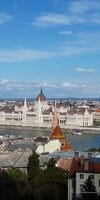Budapest - the capital, also the largest and most populous city of Hungary.
Modern Budapest is an alpha-global city is the political, cultural, commercial, industrial, and transportation center of the country.
A brief history of the formation of the city of Budapest
The history of Budapest dates back to ancient times, when the area was inhabited by the Celts, forming a settlement of AK-ink (1st century BC). Later came the Romans (89 BC) and gradually the settlement became a Roman town Aquincum (106 year), which became the center and capital of the province of Pannonia.
A clear proof of ancient Aquincum. serve archaeological Museum of Aquincum, including some remains of ancient Roman settlements.
Somewhere in the year 895 of the Danube came first Hungarian tribes, Aquincum was renamed to Buda (later obudu - Old Will) and became the first political centre of Hungary.
The settlement, which created the Hungarian tribes, was plundered and destroyed by the Mongols between 1241 and 1242 years.
With 1247 king Bela IV on the mountain began construction of a fortified Royal castle of Buda, which became a city as the ruling power, and for citizens. Buda castle (castle district of Buda) to the Royal Palace and other important landmarks have been rebuilt and restored over the time of history, can be seen today. Read more about Buda castle...
In 1361 Buda was proclaimed the capital of the Hungarian Kingdom.
Later Buda and the neighbouring city of pest were occupied by the Turks, survived the decline was liberated by Austrian troops. The 18th century saw the rapid development of pest as a trade centre. Over time, the population of pest grew, the pest has developed more rapidly than Buda and óbuda.
In 1873, the merger of three separate cities: Budapest (Pest), located on the East side of the Danube, Buda (Buda), and Obuda (Obuda), located on the West side of the Danube, formed the city of Budapest.
Budapest at present
Currently Budapest is a popular tourist destination, visited within the Tops of the cities of Europe.
Budapest is full of exciting and interesting attractions and beautiful places, including both historical and architectural, reflecting the history of the area, and natural and religious sites and objects.
Due to historical and cultural values of a considerable number of attractions listed in the world heritage list of UNESCO.
In addition to the attractions, Budapest is famous for thermal baths, which are used for General good health, boost immunity or just to have fun and relax, for treatment at the recommendations of the experts (doctors).
For these reasons Budapest is also called the "Pearl of the Danube" and even, in a broader sense, the Central and Eastern Europe.
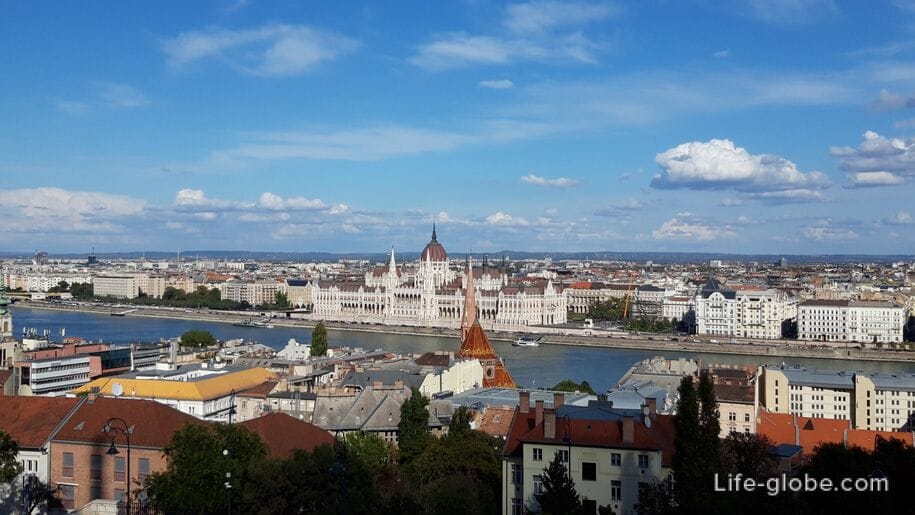
Budapest is two cities in one
Budapest is often described as two cities in one. It is a city with two seemingly so different from each other, but at the same time, similar areas, with very different landscapes, each of which is unique and good in its own way.
It's Buda and pest, and óbuda, part of modern part of Buda.
Buda in the broad sense applies to the whole Western part of present Budapest, and pest, respectively, to the Eastern part of Budapest.
Each part of Budapest has as its relief: Buda is mostly a hilly and green landscape, and pest is flat, and its own unique attractions: Buda is a historical castle, monuments, narrow streets; in the pest - elegant buildings, mostly 19th century, a variety of shops, bars and restaurants.
The two parts of Budapest are divided among themselves one of the most famous rivers in the world - the Danube.

Bridges and embankments of Budapest
Embankments of Budapest runs along the entire city from both the pest and Buda side.
Across the Danube is spanned by bridges connecting the two parts of Budapest - pest, and I Will.
In the centre of Budapest, where the main touristic center and the main sights across the river Danube are six bridges, each beautiful in its own way. For each of these bridges runs the transport, including both public and equipped with pedestrian areas on both sides of each bridge. Read more about the bridges and embankments of Budapest...
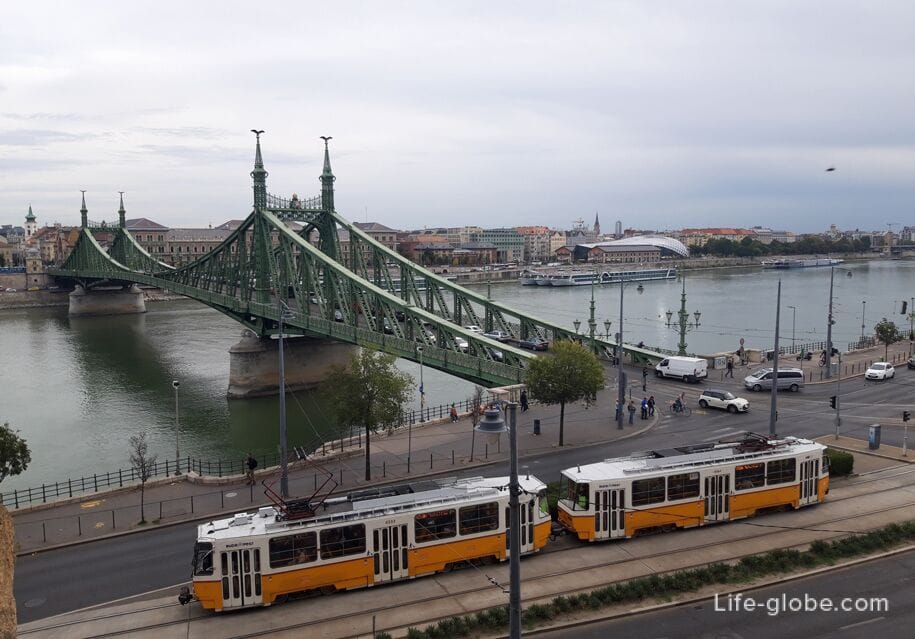
The Baths Of Budapest
The thermal baths, which have long been included in the Tops of the sights of Budapest, the city has more than ten.
The baths are all different, some will have fun with the whole family (with children), because in these baths, in addition to thermal baths, there are also swimming pools (open and closed), including baby and water slides.
Pest is famous for the famous Szechenyi baths (Szechenyi fürdő), and the Buda baths such as gellért, Rudas, király, lukács, Veli-Bay, etc. read More about all the baths in Budapest...
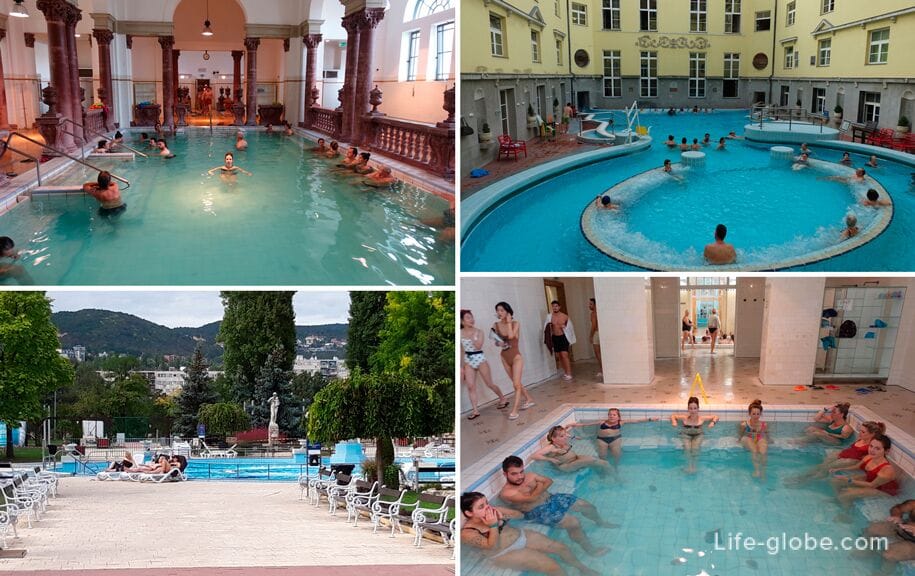
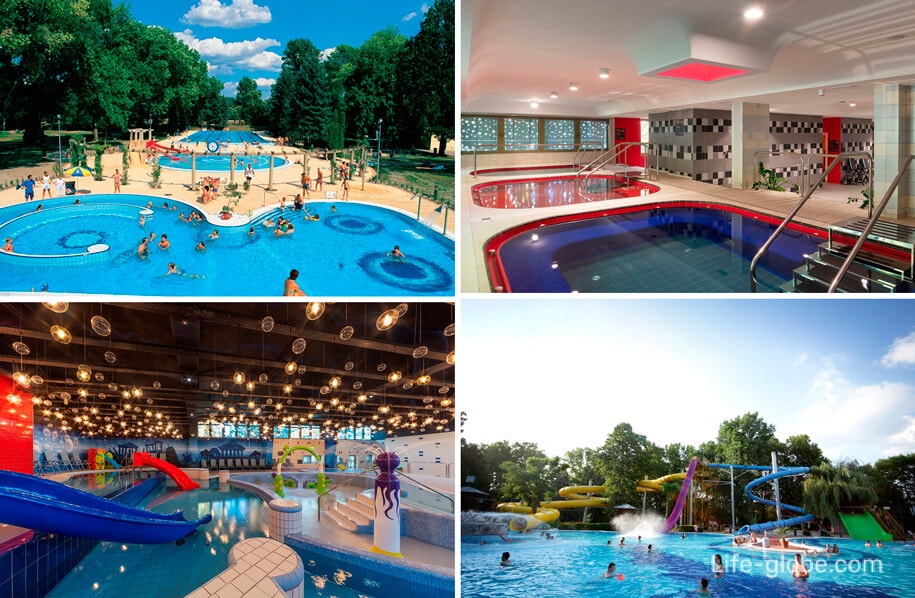
Parks Of Budapest
In Budapest especially on the pest side, there are small squares, including the square with green areas and places for recreation where you can spend time to relax between sightseeing.
The Buda side, in the broad sense, can be attributed to a single green area, where the slopes of the hills, including mountains and Gellert Janos Hiking trails surrounded by nature.
However, in the tourist center of Budapest it is possible to allocate two large parks with all conveniences:
- Margaret island (Margitsziget / Margit-sziget) - literally an island located on the Danube in Budapest.
Currently, the Margaret island is a leisure Park for the whole family, with cafes and restaurants, Seating areas, green areas with paths and alleys for walking, playgrounds and rides, and historical landmarks, a fountain, Japanese garden, water tower and mini zoo. Read more about Margaret island...
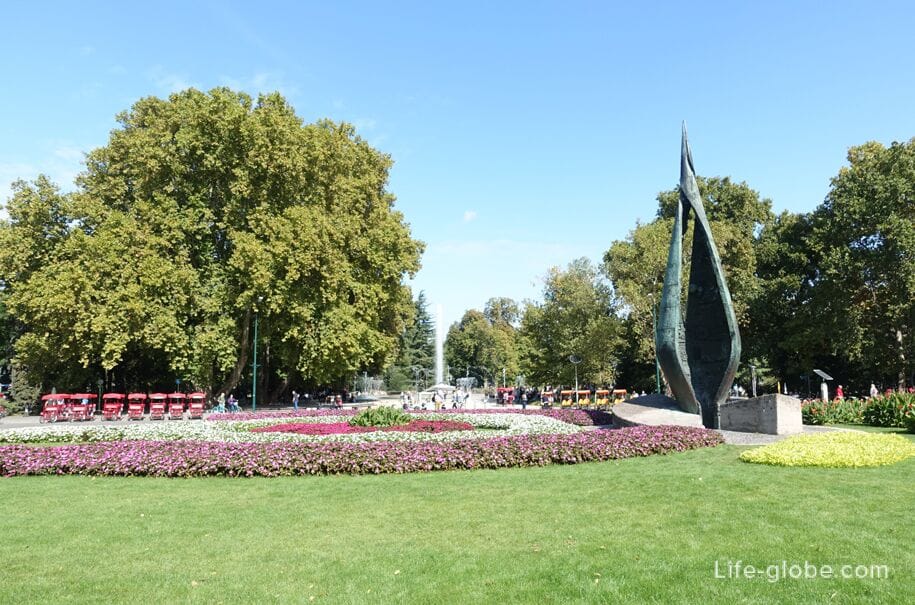
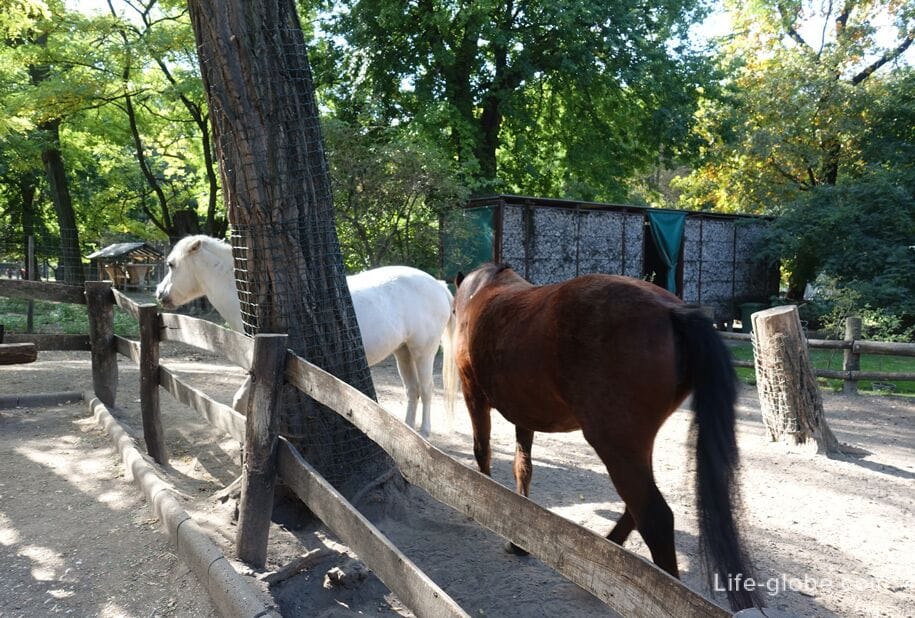
- Park Városliget-city Park (Varosliget, which means "city Park", "urban grove"), which is one of the most important, the largest and most visited parks in Budapest.
The Park was created beginning in 1751 and was one of the main places for the celebration of the Millennium of Hungary in 1896.
Park Varosliget is remarkable:
- an artificial lake, which is spanned by several bridges. Along the lake are equipped with places for rest and walks, and in the lake there are a couple of small fountains. In summer lake can go boating or catamaran, and in winter an outdoor skating rink;
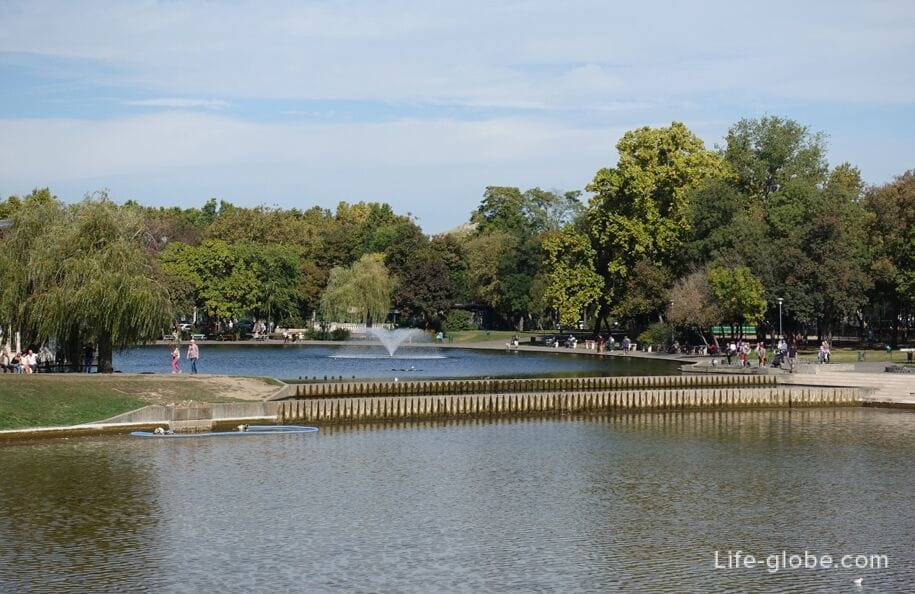
- Vajdahunyad castle (Vajdahunyad vara), which is called the most romantic and one of the most beautiful castles in Budapest. The castle is a complex consisting of a group of buildings and objects of architectural combines some of the best buildings of the historical Hungary into a single eclectic Palace;
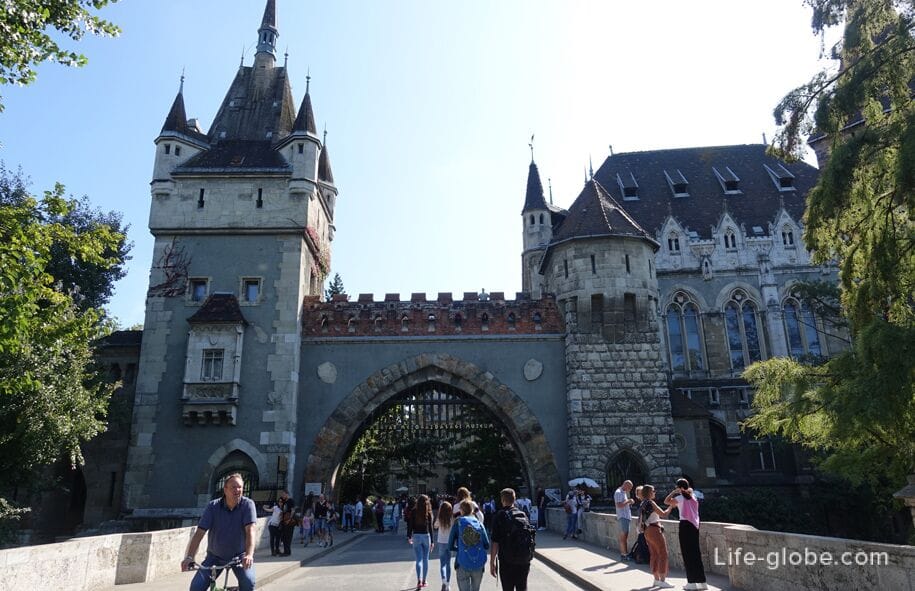
- the Budapest zoo and Botanical garden (Fővarosi Allat - es Növenykert), which is the oldest zoo in Hungary and one of the oldest in the world. The zoo has over 1,000 animals and 2,000 plants from around the world;
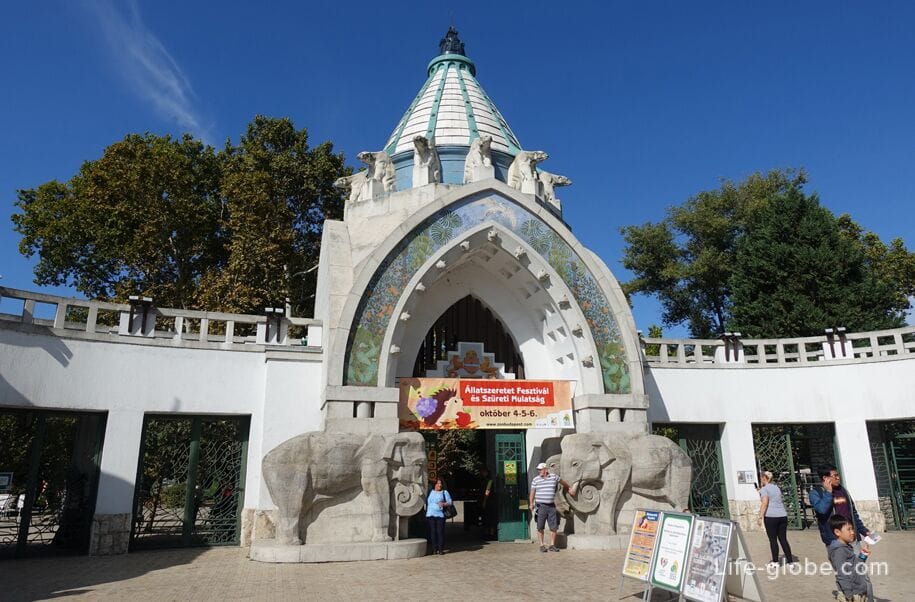
- széchenyi thermal bath - thermal (medicinal) baths and pool, the largest thermal baths of Budapest. Read more about the Park Városliget-city Park...
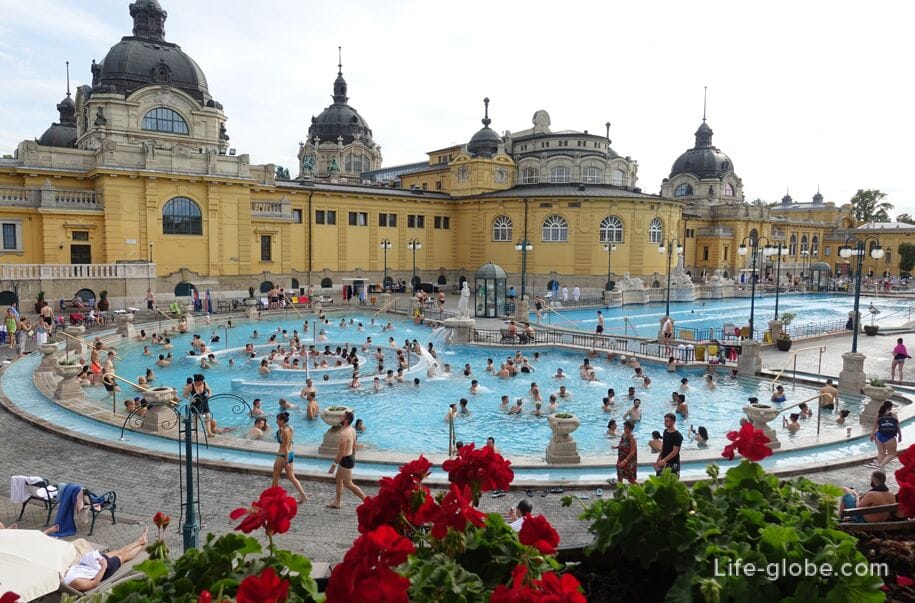
Also in Budapest is less known and less visited Park areas.
It parks such as: people's Park (népliget / Nepliget), located to the South-East of the centre of the pest side and covering an area of 110 ha; Park Museum memento (memorial Park, Memento Park), located on the southern outskirts of Buda; large green island of Obuda, or island-shipyard (Obudai-sziget, Hajogyari-sziget), is known primarily due to the presence of a large recreational area and as a venue for the annual music festival "Sziget" (Sziget). Read more about the parks in Budapest...
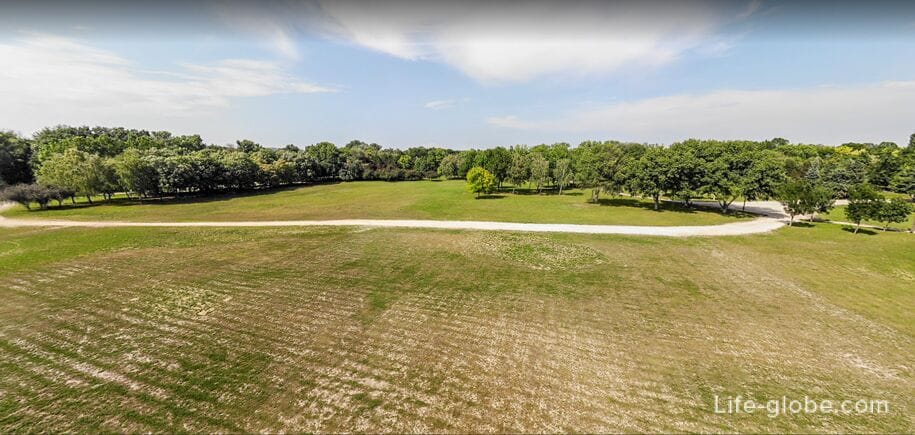
The main streets of Budapest
In Budapest, a huge number of streets suitable for walking. Located along the streets attractions, hotels, restaurants, shops and boutiques, souvenir shops, cafes and restaurants with tables under the open sky. A greater number of such streets is concentrated on the pest side.
The main and most famous tourist streets are:
- Vaci street (Vaci utca) is one of the major tourist attractions and shopping streets of Budapest.
Currently, the váci street is a pedestrian artery of the city, as a lateral (adjacent) street.
The street is just over a kilometer. Along the street are located buildings, some of which are of historical value, the part attracted to their facades decorated with tiles and decor.
On the first floors of buildings along Vaci street there are cafes, restaurants and eateries with outdoor Seating, shops, souvenir shops and boutiques. Read more about Vaci street...
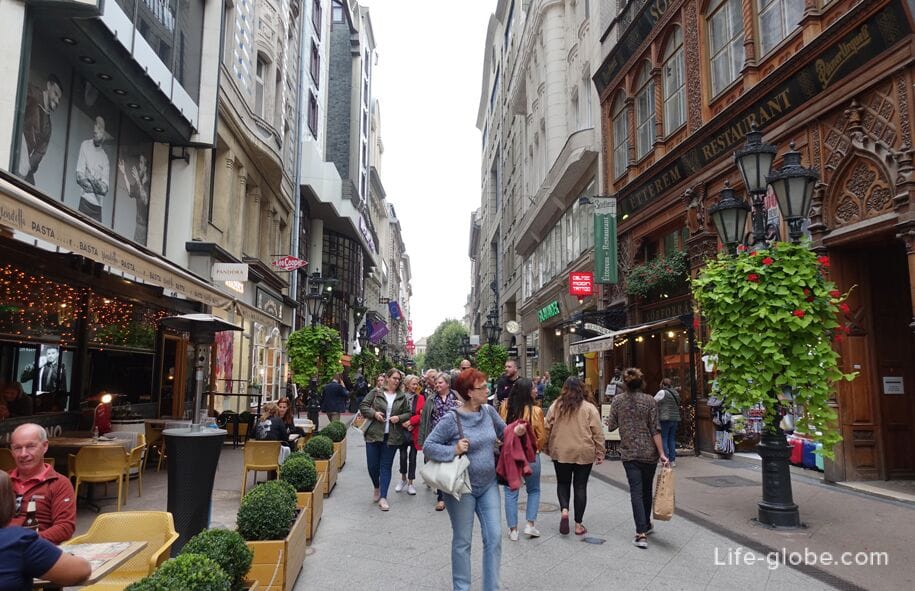
- Andrassy Avenue (Andrassy utca), which is the main Avenue and one of the main streets of Budapest.
The Avenue was formed in the period between 1870 - 1876 and named in 1885 after the main supporter of the plan, Prime Minister Gyula Andrassy.
The length of andrássy Avenue is about 2.4 kilometers, it stretches from the Heroes ' square (city Park Városliget-city Park) to the intersection with Bajcsy-Zsilinszky.
Along the andrássy Avenue are a significant historic buildings, including the Museum of Terror and Hungarian state Opera house (Magyar Allami Operahaz), is a national monument of the 19th century. Learn more about Andrassy Avenue...
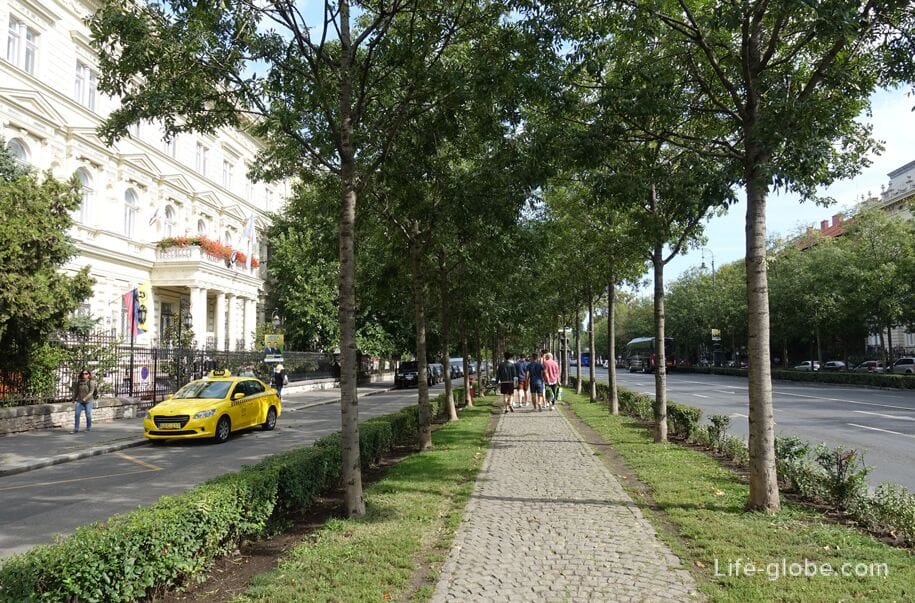
- The"pest Broadway" is the street Nagymezo (Nagymező utca), which is a popular tourist destination in Budapest.
Along the street there are houses 19th and early 20th centuries.
Due to the large number of existing theatres, located along the unextended segment of the street, namely, from the intersection with Mosser (Mozsar) and to the intersection with Andrassy Avenue, the segment, with a length of only 120 meters, often called the "pest Broadway" ("Pest Broadway") or the "Budapest Broadway" and even street theatre.
This section of the street is not only the most beautiful and elegant part of the street Nagymezo, but also one of the most beautiful places in Budapest. Read more about the "pest Broadway" - street Nagymezo...
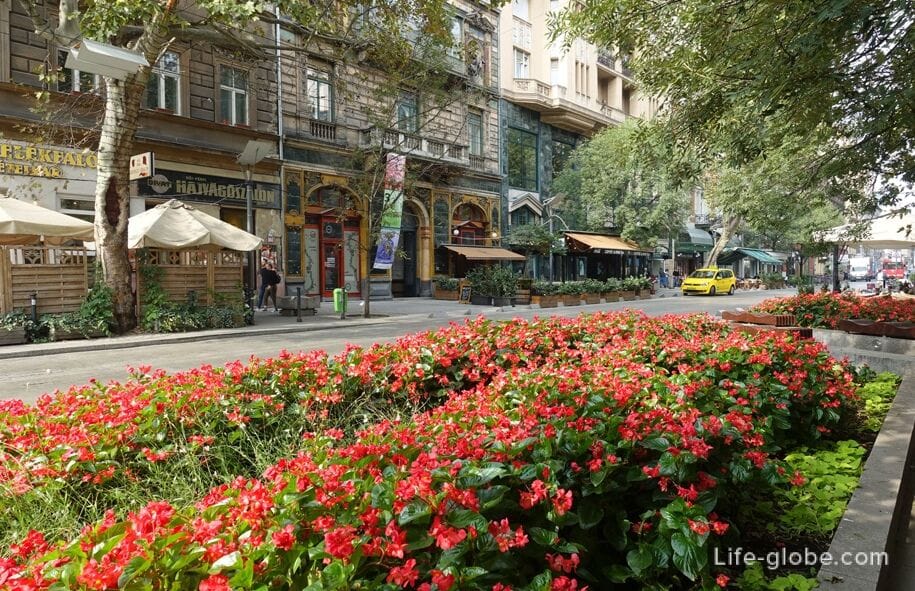
The main squares of Budapest
Budapest is full of squares of various sizes and importance.
Is the so-called main squares - those that are in the Tops of the sights of the city and past which will, perhaps, few tourist. Such areas are located in the center of the city, they are landmarks and interesting objects. And there are those who there is nothing special about, they are less visible and visited.
On the pest side of the square is notable for the following:
- Heroes ' square (Hősök tere) is one of the most important, the largest and most visited areas of Budapest.
The square was formed for the celebration of the Millennium of Hungary. It was then the monument to the Millennium, which is the main decoration of the square.
Currently, the square hosts concerts, festivals and other events, and on both sides of the center square museums: the Museum of fine arts and Palace of arts, the so-called Mucsarnok. Read more about Heroes ' square...
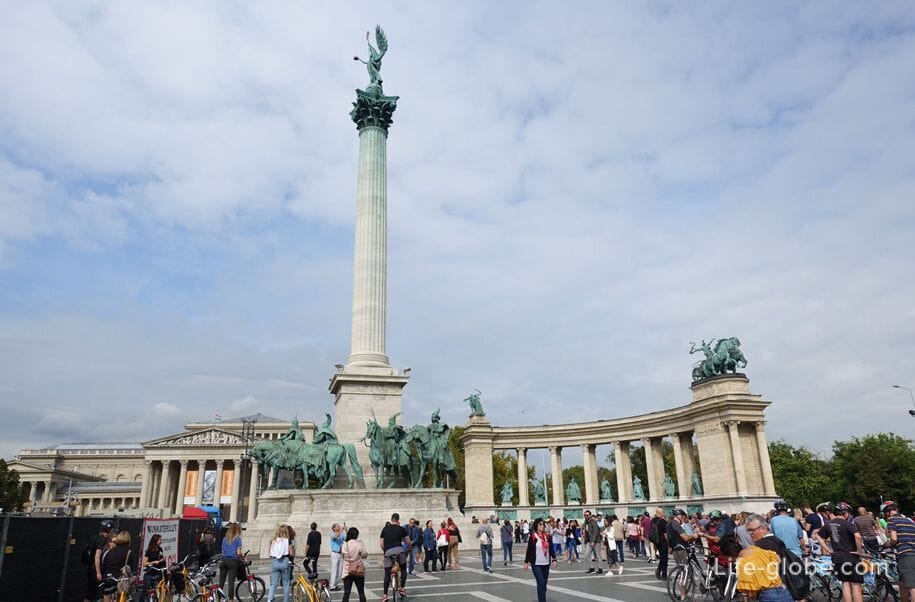
- Freedom square (Szabadsag ter) - a public space - one of the largest squares in Budapest.
Liberty square has a rectangular shape, its center is a square with a fountain, Seating areas, pedestrian areas and children's Playground.
In the square are memorials and monuments, and around the perimeter of the towering historical buildings, including the monument to the Victims of the German occupation, the monument to the Soviet soldiers, the building of the Hungarian national Bank, the former home of the Budapest stock exchange and the U.S. Embassy. Read more about Liberty square...

- area of Lajos Kossuth or just the Kossuth square (Kossuth Lajos ter) is perhaps the most famous and visited square in Budapest.
In the square are historical buildings of Hungary, as well as memorials and monuments, including the majestic and unrivalled Hungarian Parliament building, Palace of Justice, the building of the Ministry of agriculture, chocolate Museum and St. read More about Kossuth square...

- the Szechenyi Istvan square or just the square Szechenyi (Szechenyi Istvan ter), named in honor of count istván section is a very popular item among visitors to the city.
Through the area are many Hiking trails in Budapest.
The square is the Gresham Palace (Gresham-palota), which is the main decoration of the square, the walls of which currently is one of the luxury hotels Budapest - 5-star Four Seasons Hotel Gresham Palace Budapest. Read more about széchenyi square...

- area of Elizabeth or Erzsebet square (Erzsebet ter) is one of the most visited areas of pest.
The center of the square forms a square with a fountain Danubius (Danubius-kut) is the largest green area in the historic pest.
Also on the square are cafes, places to stay and a Ferris wheel.

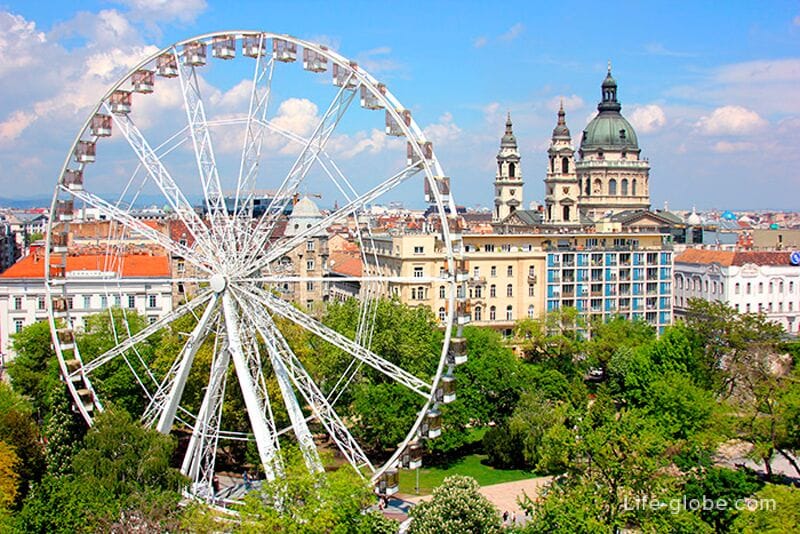
The square on the Buda side
The main visited area of the side Buda situated on the Castle hill (Castle hill) within the Buda castle, which is a kind of city within a city, and a treasure trove of interesting objects, museums and Budapest is a Paradise for lovers of panoramic views. These are square, St. George's square, the Holy Trinity square and the area of the Vienna gate.
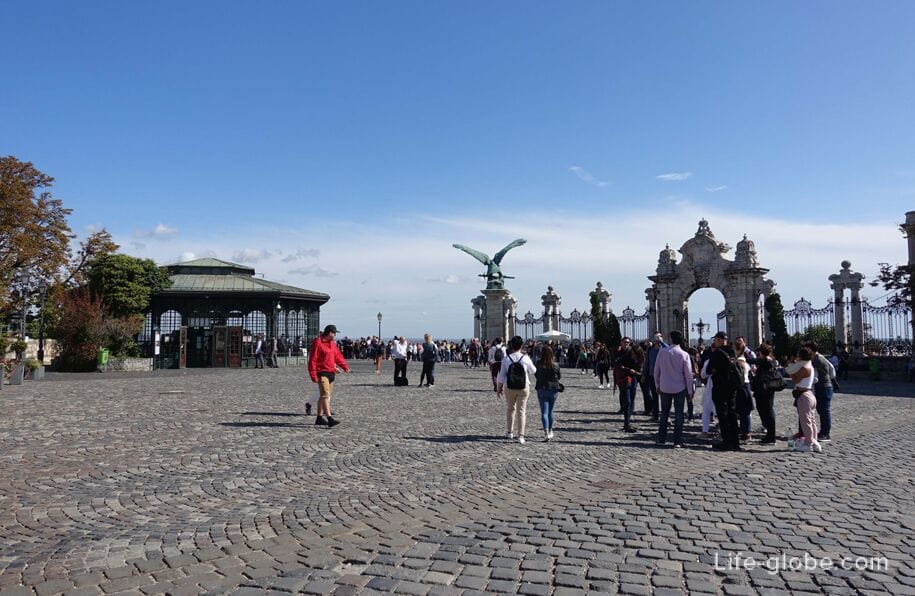


Also on the Buda side is notable for the Adam Clark square (Clark Adam ter), located near the Western end of Chain bridge.
The square is notable: the lower station of the funicular to the Castle hill, a tunnel under the Castle hill and kilometre Zero ("0" kilometerkő), which is a three-meter stone sculpture in the form of numbers "0" (zero), which symbolizes the beginning of the starting point of the main road kilometre numbering for the road network of Hungary. Read more about main squares of Budapest...
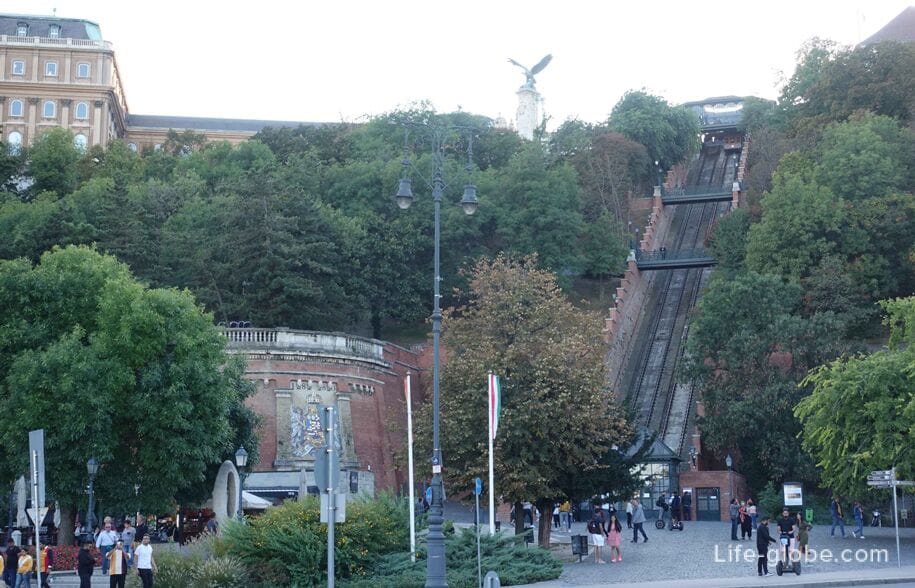
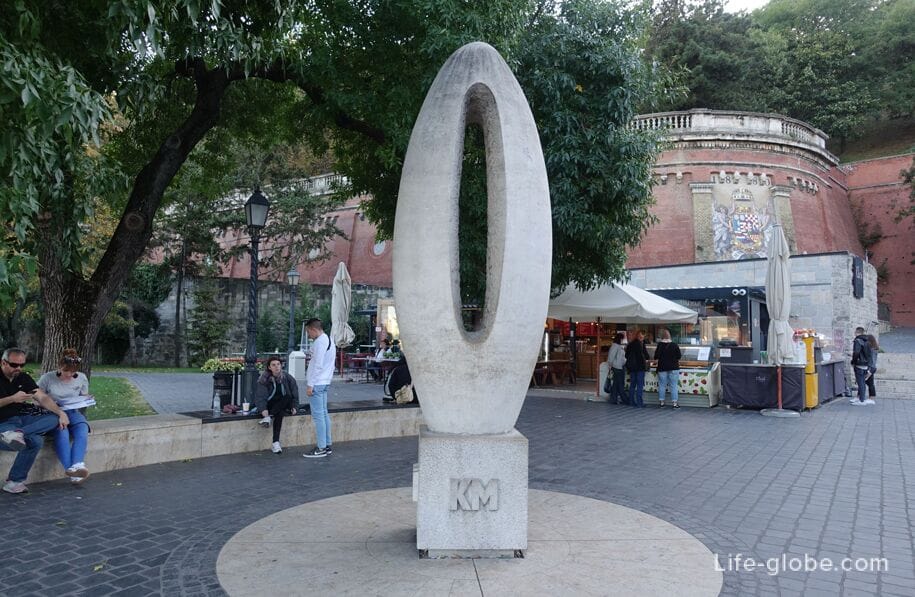
Underground Budapest
In Budapest there is an opportunity to explore the city not only from the ground, examining the main attractions and to admire the panoramas from the height of a visit to the observation deck and lookout point of Budapest, but also to go underground, having studied some of the areas "inside".
Hilly-mountainous area of Buda hides a world of dungeons, consisting of caves and miles of a network of tunnels and passages built under the Buda hill.
To the underground of Budapest are:
- two caves is a mountain cave in Her (Szemlő-hegyi-barlang) and the stalactite cave of PAL-of wildii (Pal-völgyi-barlang);
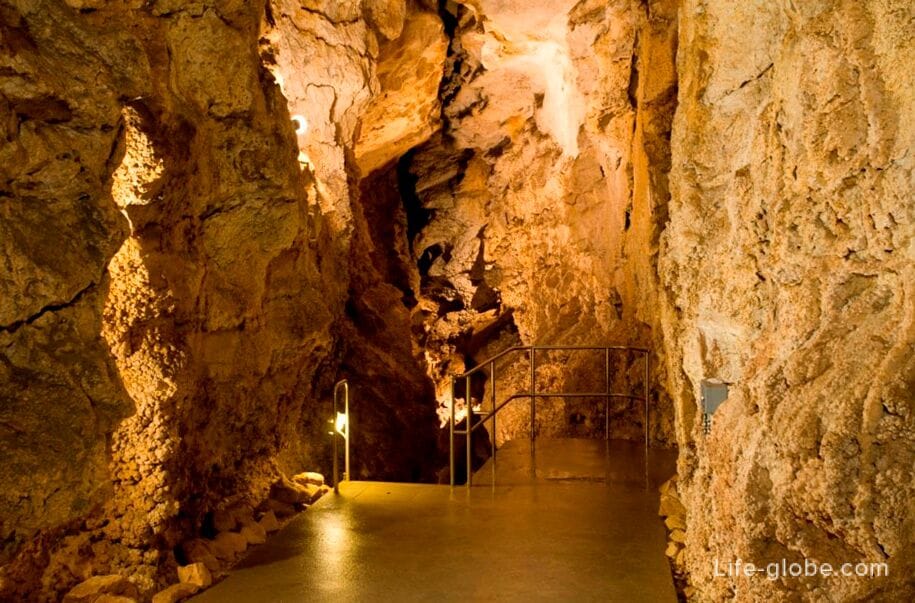
- Museum of the Labyrinth (Labirintus) and the Museum "Hospital in the rock" (Sziklakorhaz Atombunker Muzeum);
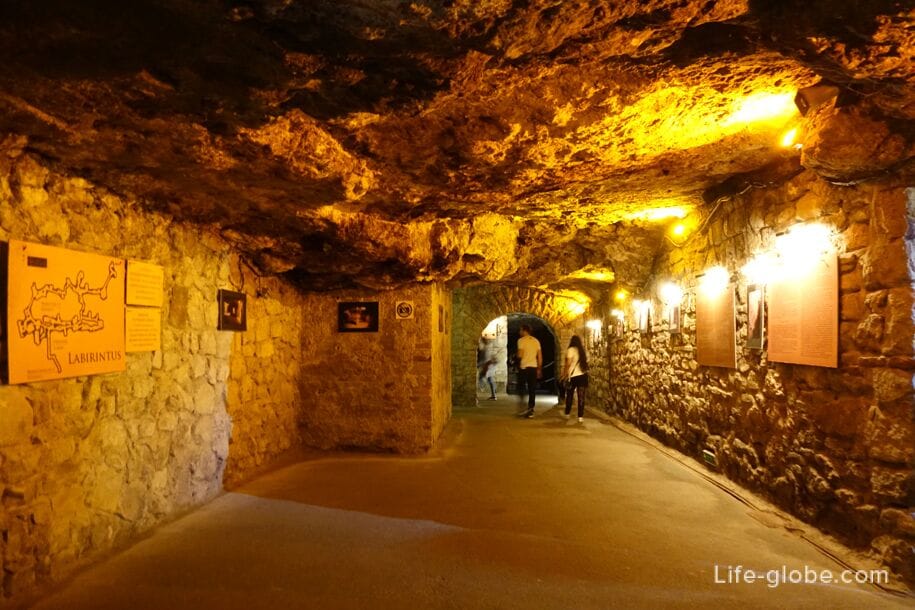
- the chapel of St. Michael, accidentally discovered during the construction of the Fisherman's Bastion;

- Museum "Hospital in the rock" or Museum hopper Rock Hospital, also known simply as the Hospital in the rock or the Hospital in the rock (Sziklakorhaz Atombunker Muzeum) is an object with an area of about 2000 m2, located under Buda castle, which was used during the Second world war and during the revolution of 1956.
In the underground premises of the Museum are the exhibition of wax figures, as well as tools and equipment of civil protection concerning the history of the hospital and the development of military medicine;
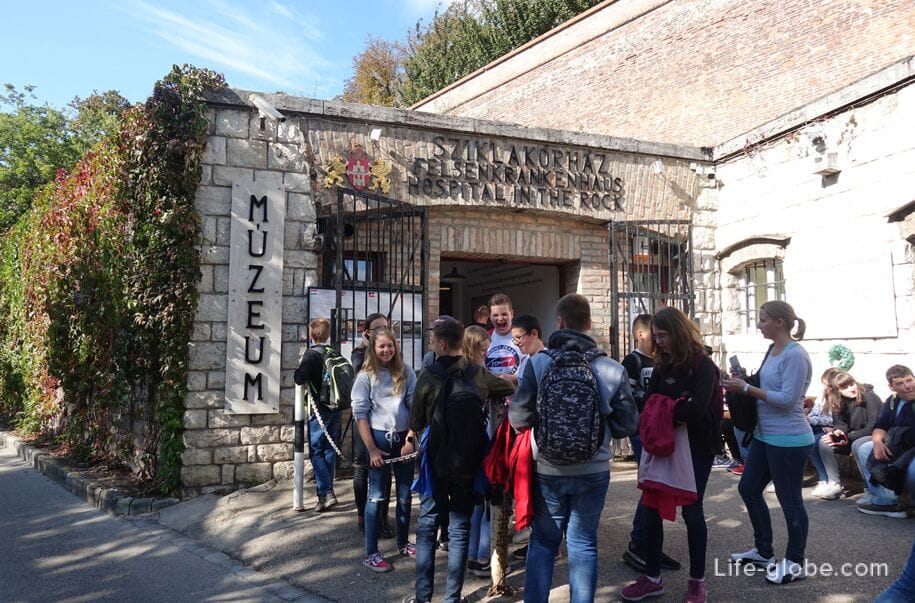
- rock's Church of our lady of the Rock (Magyarok Nagyasszonya-sziklatemplom), located at the foot of gellért hill, with its southern side and consists of two parts: upper - the ancient caves and the lower artificial stone cavity, located inside the mountain, where the temperature in winter and in summer is 21°C. read More about the underground world of Budapest...
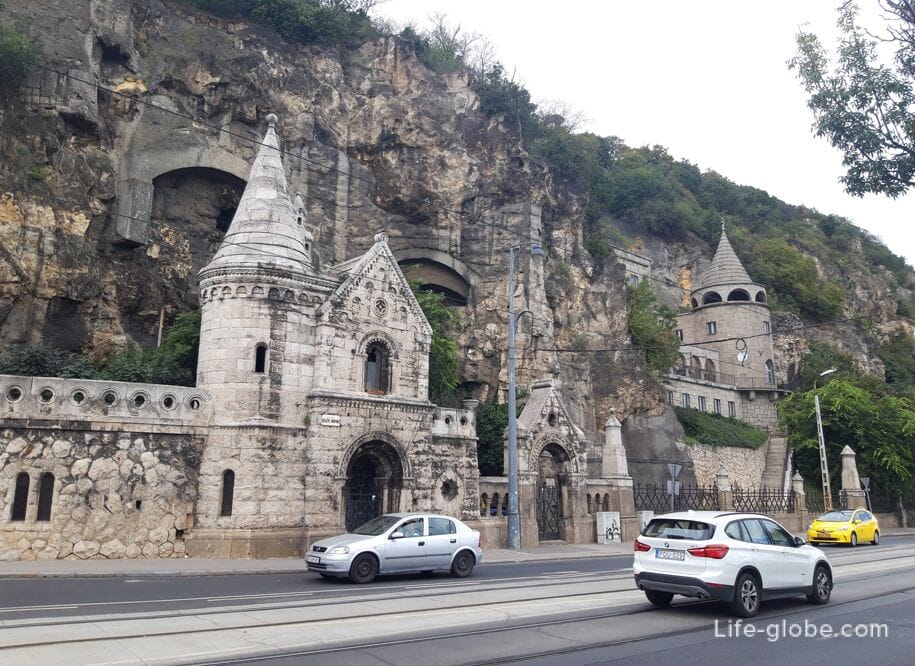
The Jewish quarter in Budapest
The Jewish quarter in Budapest is located in the inner half of the heart of Erzsébetváros district (Erzsebetvaros), which is one of the Central and most populous district of pest.
In the Jewish quarter and the heart of Erzsébetváros district as a whole concentrated a considerable number of attractions, including the Great synagogue or the synagogue on Dohany street (Nagy Zsinagoga / Dohany utcai Zsinagoga), the largest functioning synagogue in Europe. Read more about Jewish quarter...
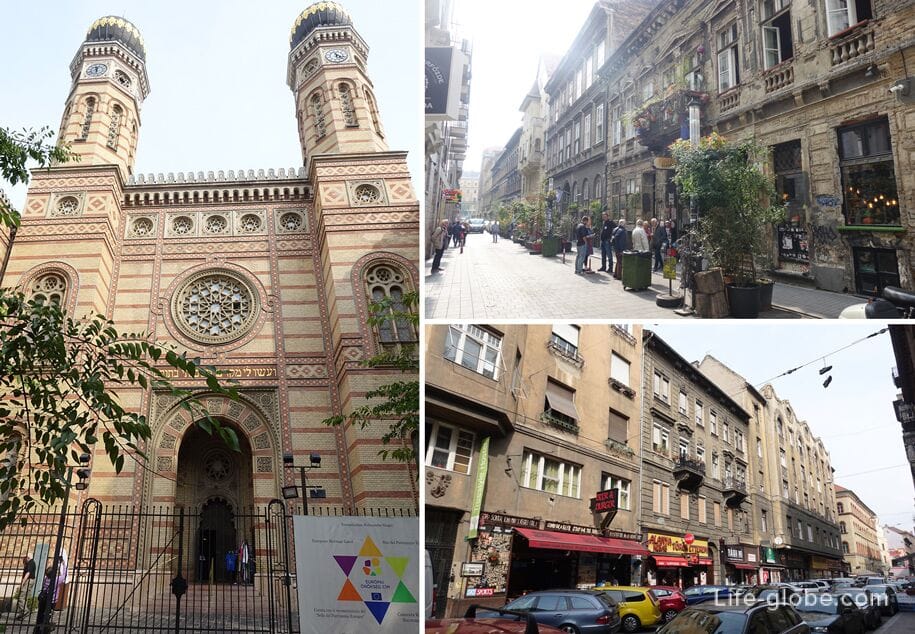
Tourist attractions in Budapest (museums)
The main sights of pest:
- the Hungarian Parliament building, which is among the most beautiful buildings of the parliaments of the world and the most beautiful buildings of Budapest;

- sculpture of "Shoes on the Danube promenade", which is a memorial erected in memory of the victims of the Holocaust;
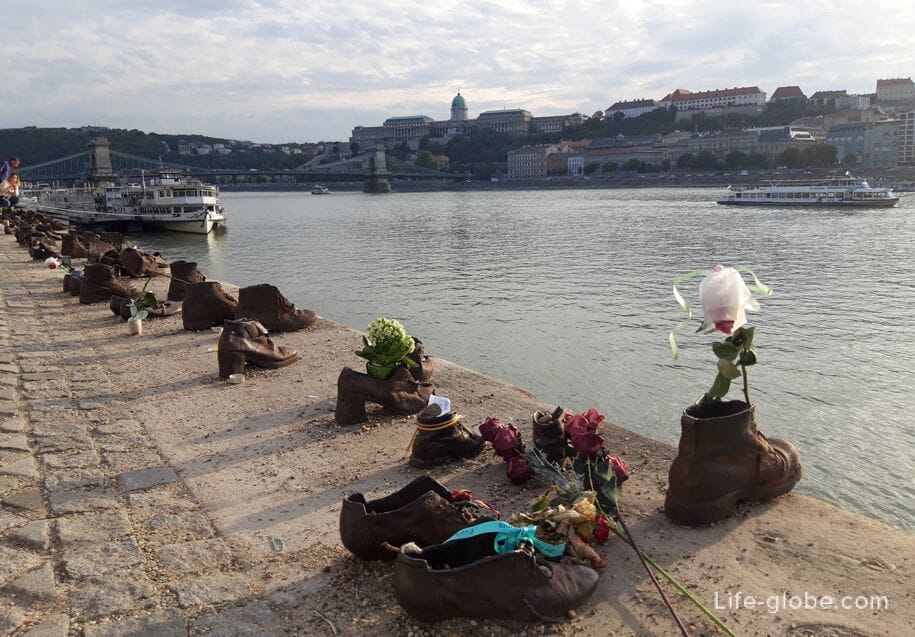
the Gresham Palace is one of the most recognizable buildings in Budapest;
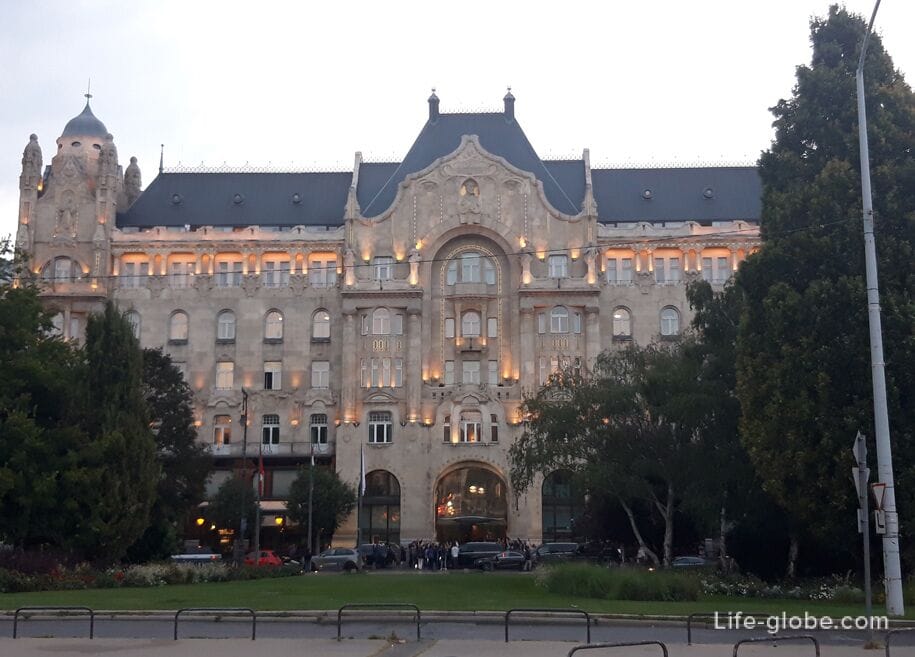
- Vigado concert hall, which is the second largest concert hall in Budapest;
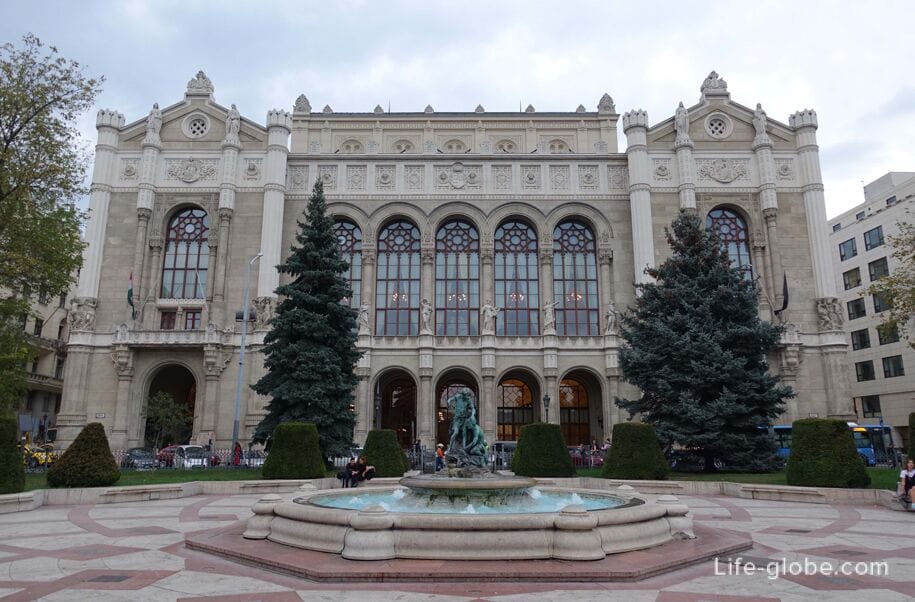
- St. Stephen's Basilica Roman Catholic Basilica is the most important Church building in Hungary, one of the important spiritual and tourist attractions of the country;

- "Paris courtyard" historic building, which originally served as the headquarters of the Central savings Bank and built in 1817. This building was one of the first modern office buildings in Hungary. Currently, the walls of the building are: a café and restaurant, a business centre and 5 star hotel Parisi Udvar Hotel Budapest;
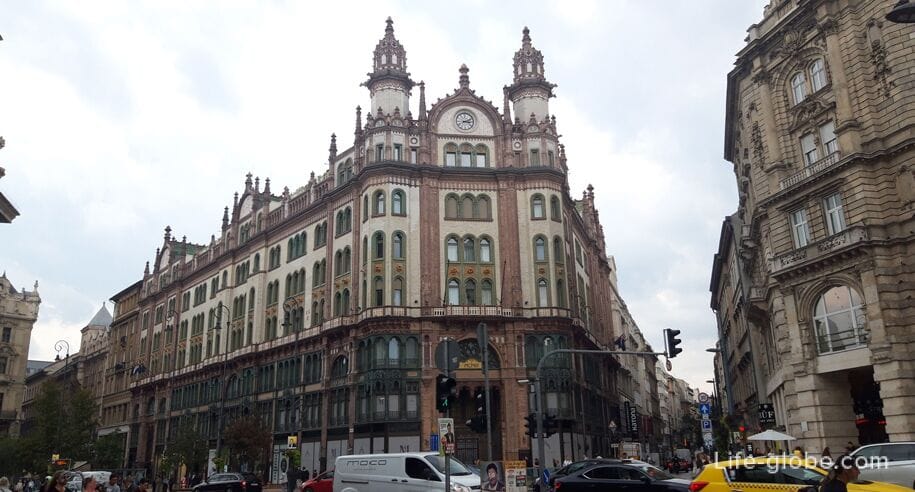

- palaces Clotilde, representing two large typical British (neo-Baroque and eclecticism) buildings that are near each other - a mirror opposite buildings separated by a street make contact Lajos;
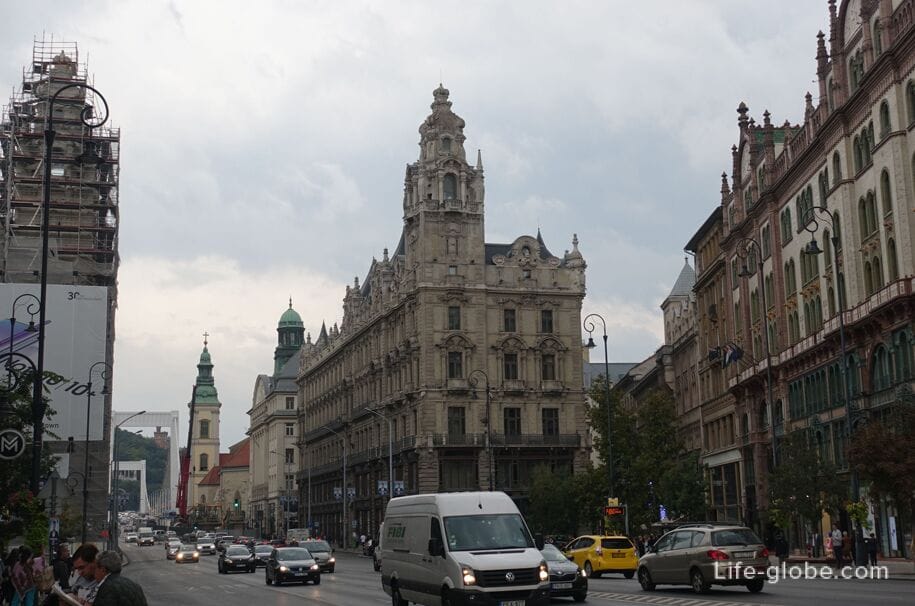
house gerbo, built in 1858-1862 and is built in a modern style, located in Square Vörösmarty. Currently, the first floor is the famous Cafe "Garbo" (Cafe Gerbeaud) - one of the biggest and best-known coffee-house in Europe;
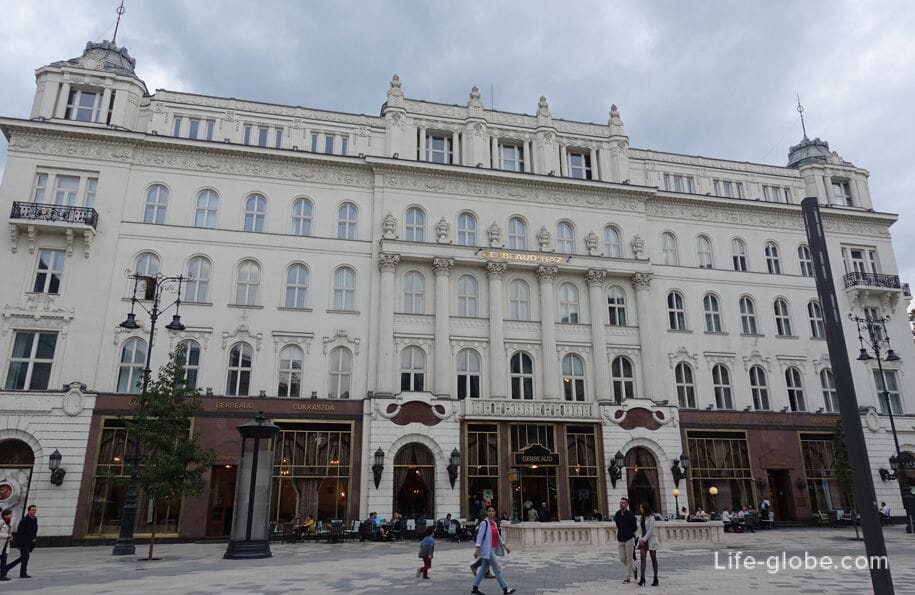
Hungarian state Opera house;
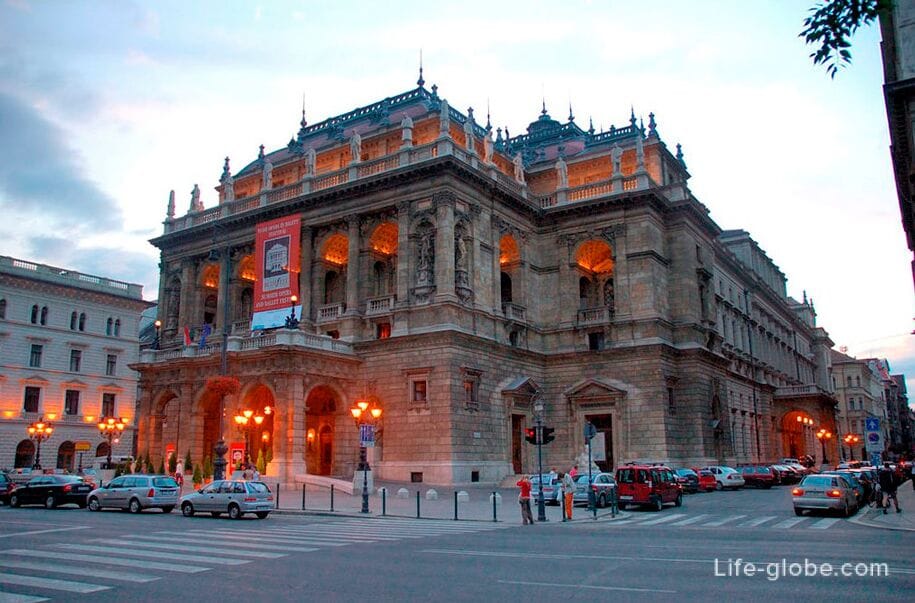
The great synagogue;
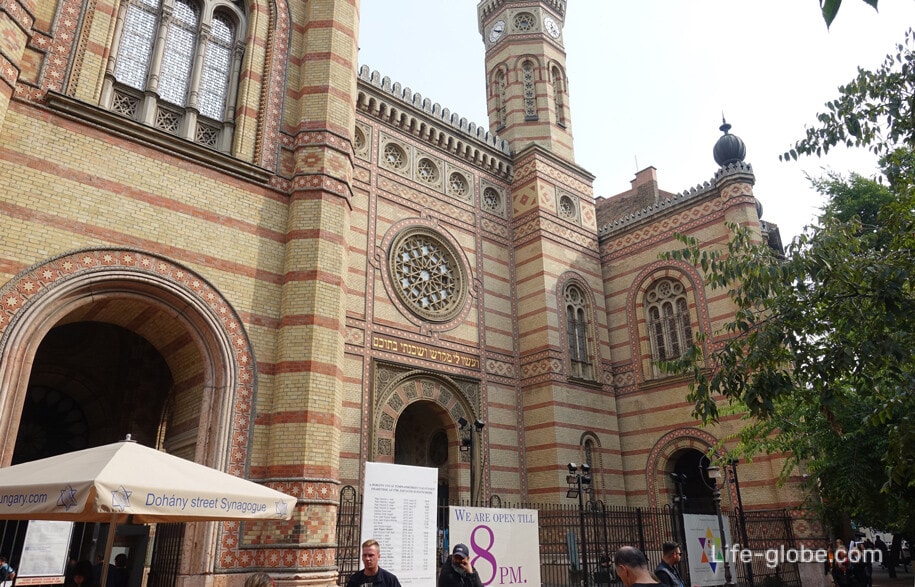
- New York Palace - eclectic building was built between 1892 and 1894 for the Hungarian head office of the new York company of life insurance. On the first floor of the building is the legendary café new York (New York Cafe), and in the building is a 5-star hotel Dedica Anthology, Autograph Collection;
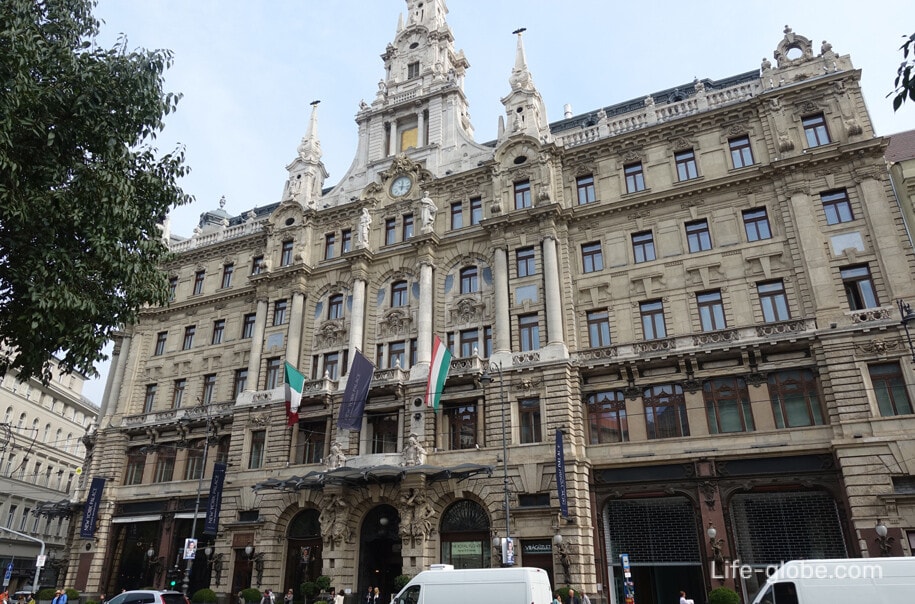
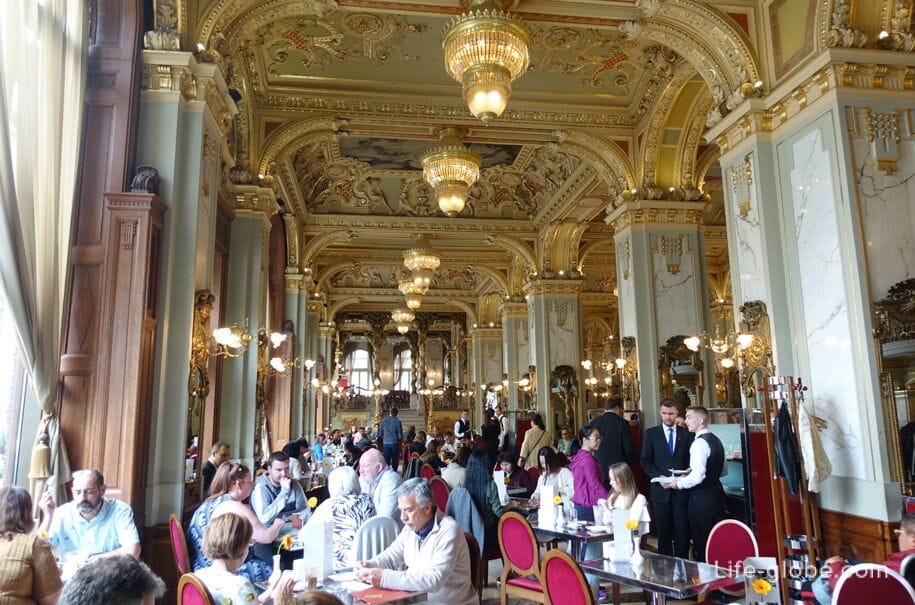
- also: the Heroes ' square and Liberty square, Varosliget Park with Vajdahunyad castle and some museums: Museum of fine arts, house of Terror, Hungarian ethnographic Museum, the Hungarian national Museum, Museum of applied art, Petofi Museum, postal Museum, Museum of brands, Holocaust memorial center, Hungarian Museum of natural Sciences and the Park of Hungarian railway history.
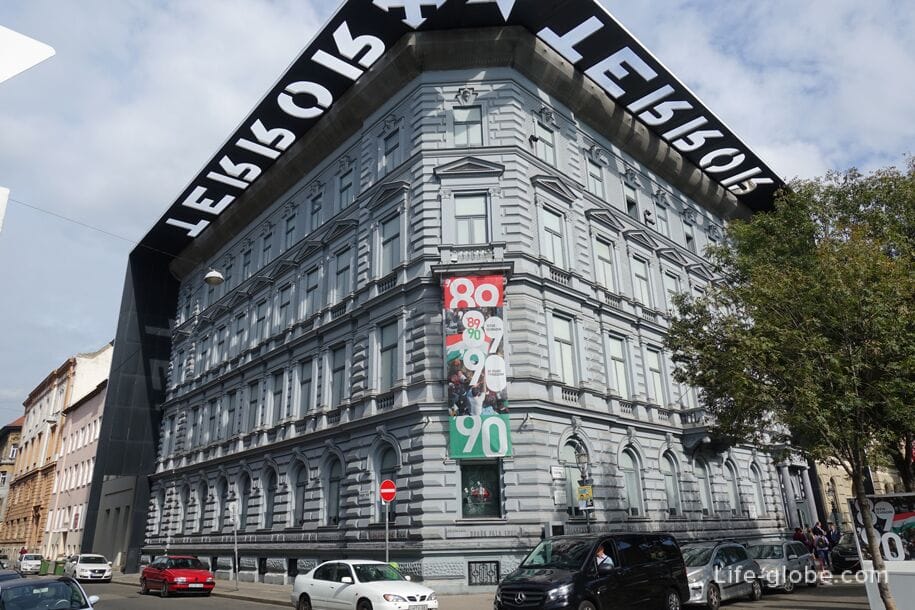

The main sights of Buda:
- gellért hill - the hill (mountain) with views of the Danube river, with a height of 235 metres.
On the gellért hill is notable for attractions such as the statue of Liberty, one of the symbols of Budapest, the citadel, founded in 1854 and is built on an ancient settlement and the rock Church;
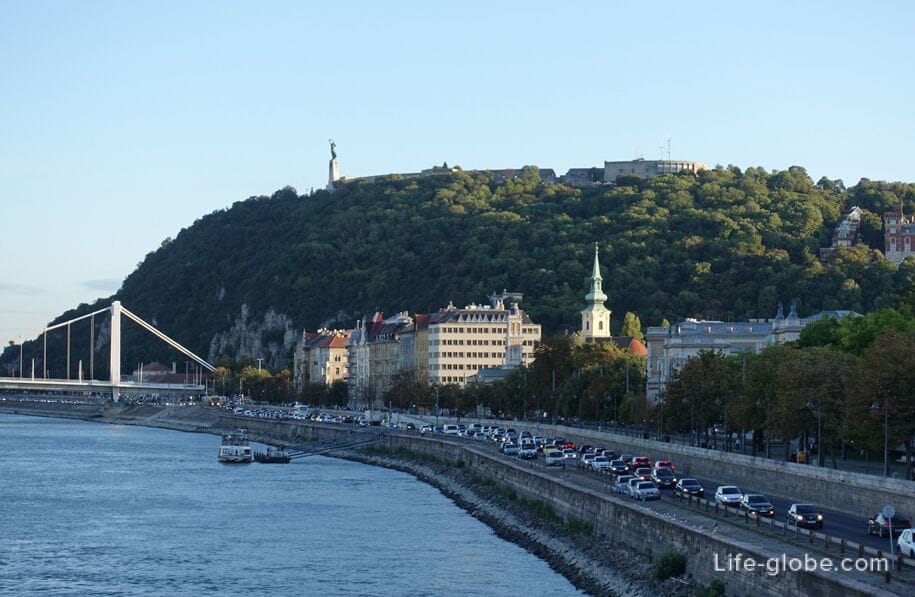
- Buda castle, which is a historical district of Buda castle, surrounded by medieval, now restored fortified wall, outside of which is the number of objects, originally medieval in origin, and the monuments of the 17th and 18th centuries.
On-site Buda castle is notable for such objects as: the Royal Palace - the historical castle and Palace complex, once the residence of Hungarian kings; the Fisherman's Bastion, built in neo-Romanesque style between 1895 and 1902 the years, on a site partially destroyed while the ramparts; the Matthias Churchwith a rich historical past and is the most beautiful and one of the most important churches of Budapest, etc.;
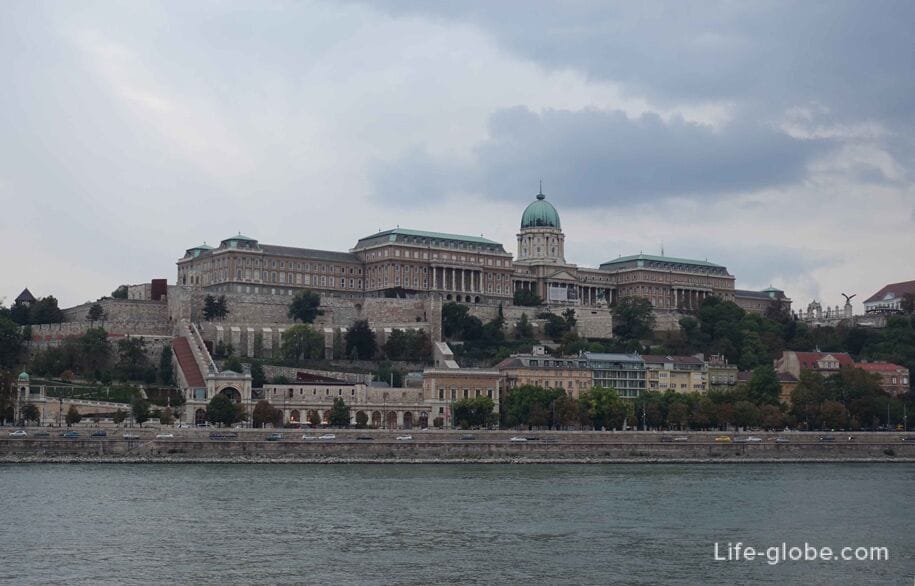
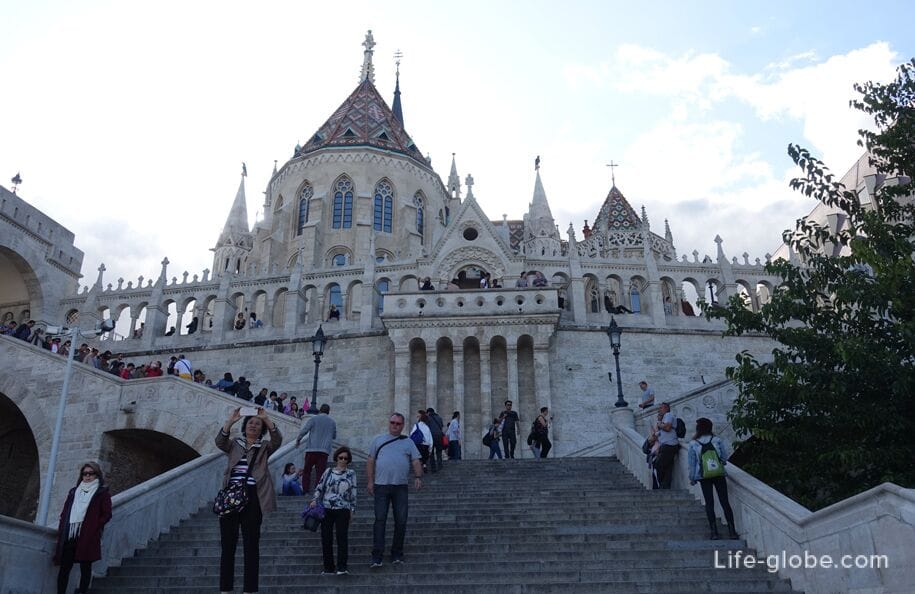
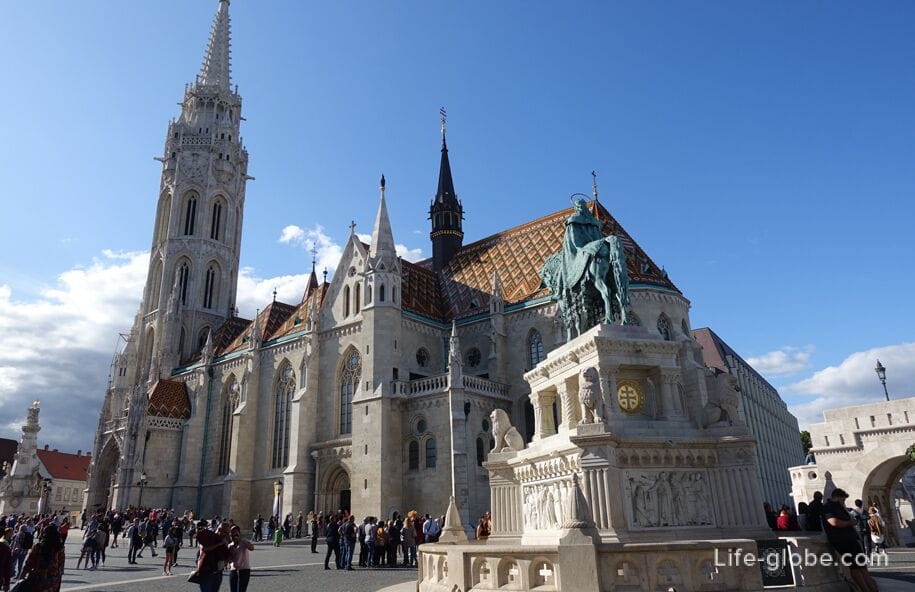
- a mountain or a hill Janos / Janos - the highest point and one of the best lookouts in Budapest. On the mountain is an observation tower with a height of 527 meters, known as the observation tower or the Elizabeth lookout tower and Elizabeth's giving a fine panoramic view;
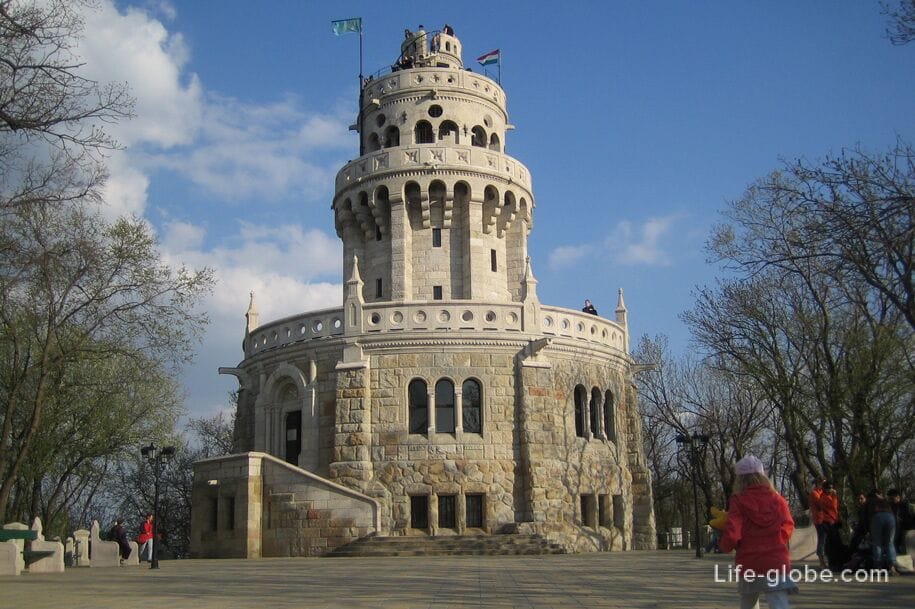
cable car - a gondola lift (Zugligeti Libegő);

- the mausoleum of Gul Baba's Tomb, which is sacred place of pilgrimage and also tourist attraction and represents the complex, which includes terraces, fountains, flower beds and the tomb of Gul Baba;

the cave;

the Zichy Palace is a two - storey building in the Baroque style, originally built on the ruins of a Church count miklós Zichy in the years 1746-1757. Currently, the buildings of the Palace complex of museums and a concert hall in the yard;

Museum Kiscelli historical Museum, located in the eponymous castle in the Baroque style, built in the 18th century for the monastery of the trinitarios. The exposition of the Museum devoted to the modern history of Budapest (18-21 centuries), as well as the lifestyle and culture of the residents of the area;
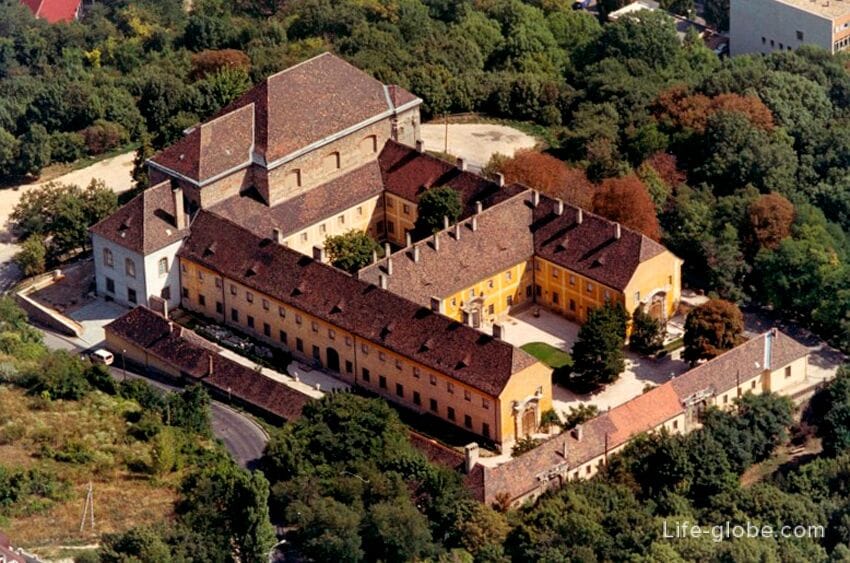
Museum of Aquincum, the ruins (archaeological sites) of the ancient Roman city of Aquincum.;
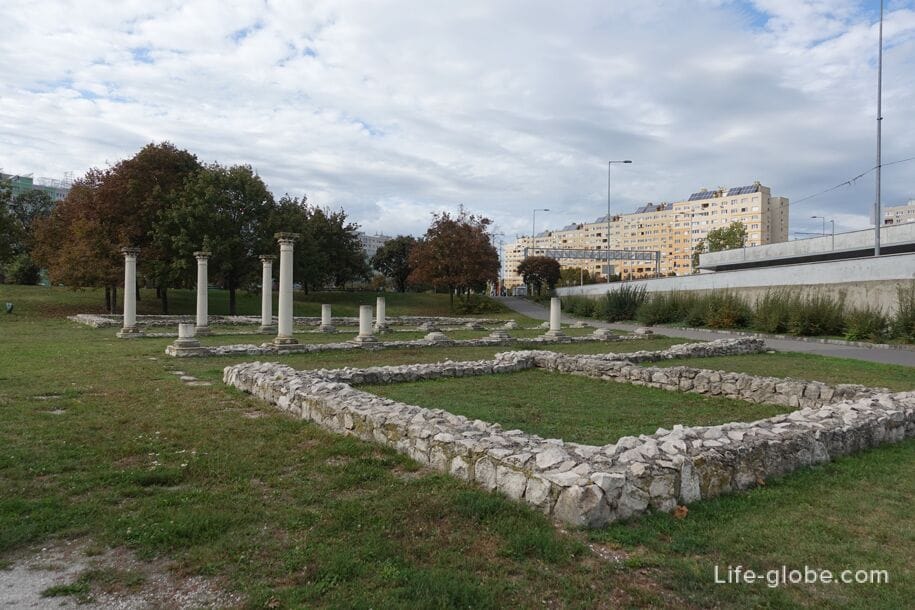
- Museum-Park memento (memorial Park), which presents sculptures (monuments) of the Communist era between 1945 and 1989, including allegorical monuments of "Hungarian-Soviet friendship" and "liberation", as well as statues of famous figures of the labor movement and the soldiers of the red army. Read more about Budapest sights...
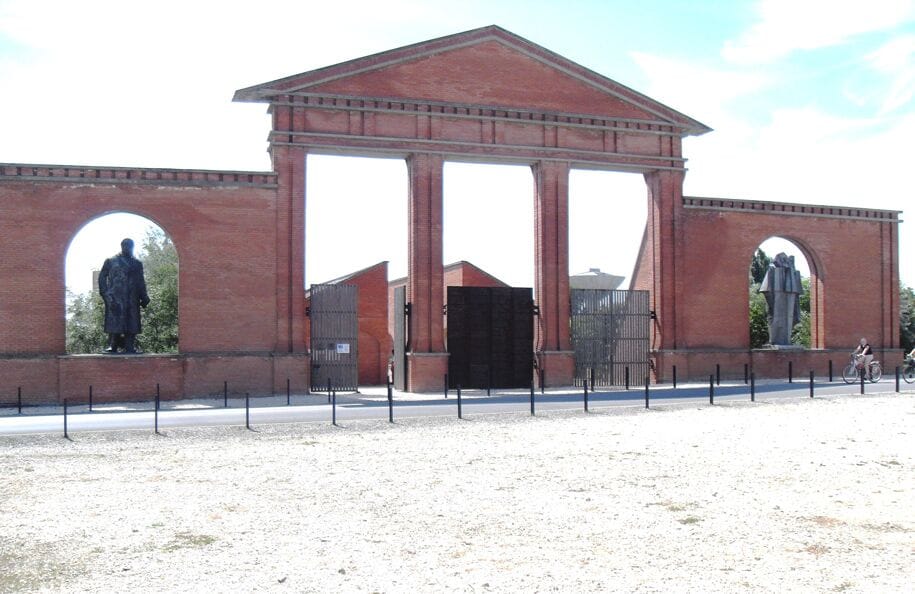
The Oceanarium at Budapest
Tropicarium - Oceanarium (Tropicarium - Oceanarium) consists of several rooms, in which visitors are freshwater fish, including the home fauna, tropical wildlife and a variety of sea creatures, including sharks, alligators, exotic reptiles and amphibians, small monkeys and birds.
Address aquarium: Nagytetenyi ut 37-43.
The website of the Tropicarium - Oceanarium: tropicarium.
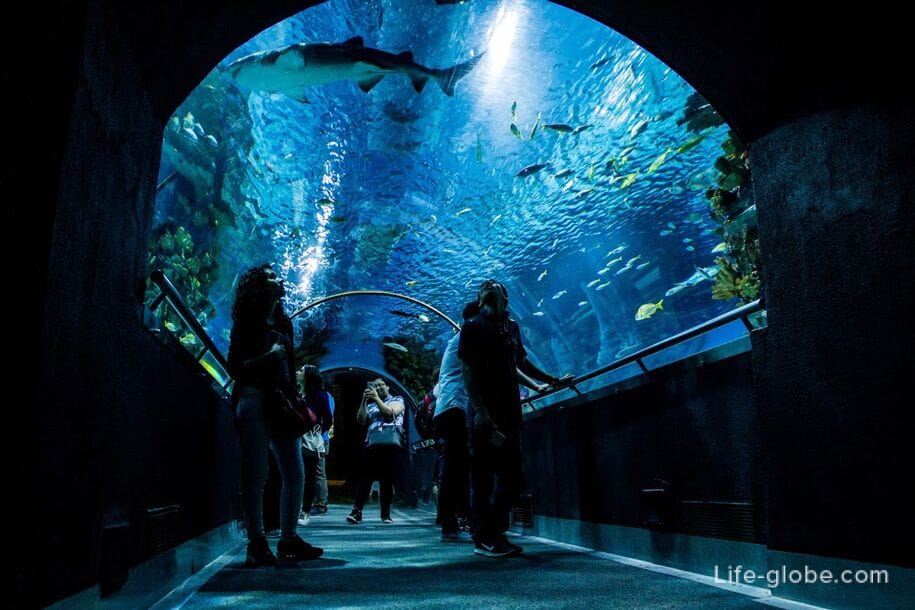
Water Park in Budapest
Waterpark Aquaworld (AquaWorld) is the largest water entertainment area of Hungary, with both indoor (year-round) and outdoor (from may to October) areas, which are: 4-star resort hotel Aquaworld Resort Budapest is a Spa and fitness center, with swimming pool with thermal water, sauna, Hammam and gym.
Address of Park: Ives ut 16 (the Park is located on the Northern outskirts of the pest side).
The website of the Park: aquaworldresort.
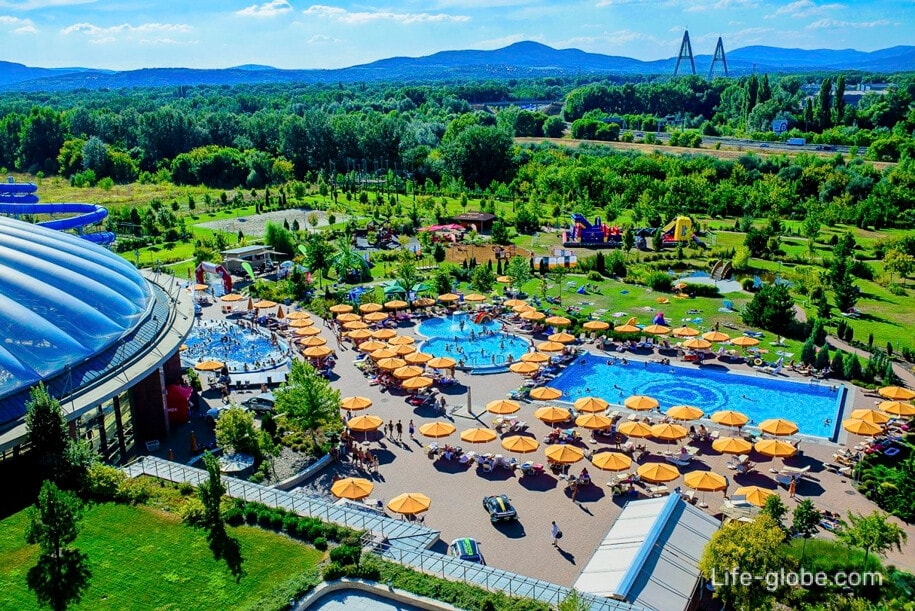
Viewing platforms and observation points in Budapest
Viewing platforms and observation points in Budapest - those are the places with panoramic views of the city or town.
Also sightseeing points of Budapest can be attributed to Ruth bars bars and cafes located on the roofs (terraces) buildings, of which also offer views of the city.
The main observation deck of Budapest:
St. Stephen's Basilica, the dome which you can climb for a fee and where there is a circular open area, giving a 360° view of Budapest (district of pest);
Ferris wheel located on the place of Elizabeth;
concert ass Pesti vigadó is located on the Pest embankment, on the same Vigado square (Vigado ter, 2). On the 6th floor vigadó is a panoramic terrace facing the Danube, which offers views of the Danube, the Pest embankment and the old Buda side;
- gellért hill, with several equipped observation decks and lookout points;
- The Buda castle, within which there are several viewing platforms and observation points;
mountain Janos with a tower, Elizabeth. Read more about observation deck Budista...
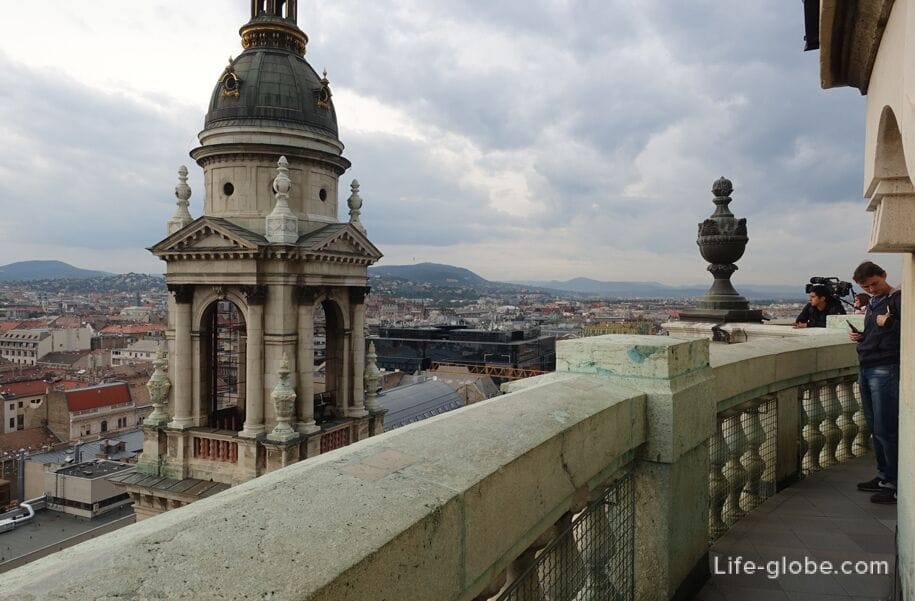
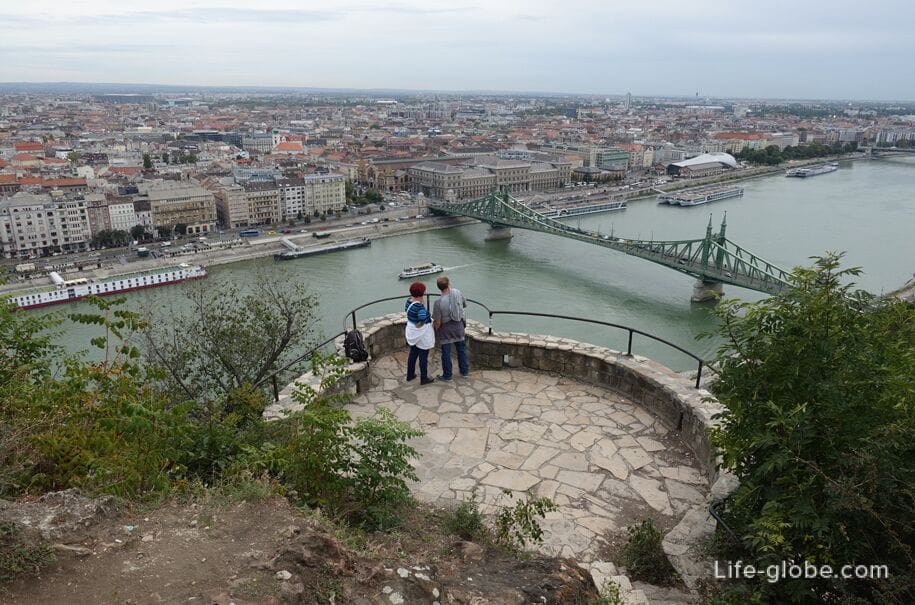
In Budapest with children
Diverse in Budapest each family will be able to find something to do and something to see, to build a route through the city in accordance with their tastes and preferences.
In Budapest there are museums suitable for adults and children, playgrounds for children, including hidden from public view, parks, circus, zoo, juvenile railway, baths, etc read More about where to go and what to see in Budapest with the kids...

Tours in Budapest
Danube river cruises
To stay in Budapest, including family, you can go to one of the cruises on the Danube.
Duration of cruises-walks and programs are different. Is hour sightseeing cruises with welcome drink, a 3-hour sightseeing walk, there are evening included champagne and(or) dinner, live music, etc.
Information on cruises can be found on the place, or buy a cruise in advance. Link to cruises and other trips in Budapest...
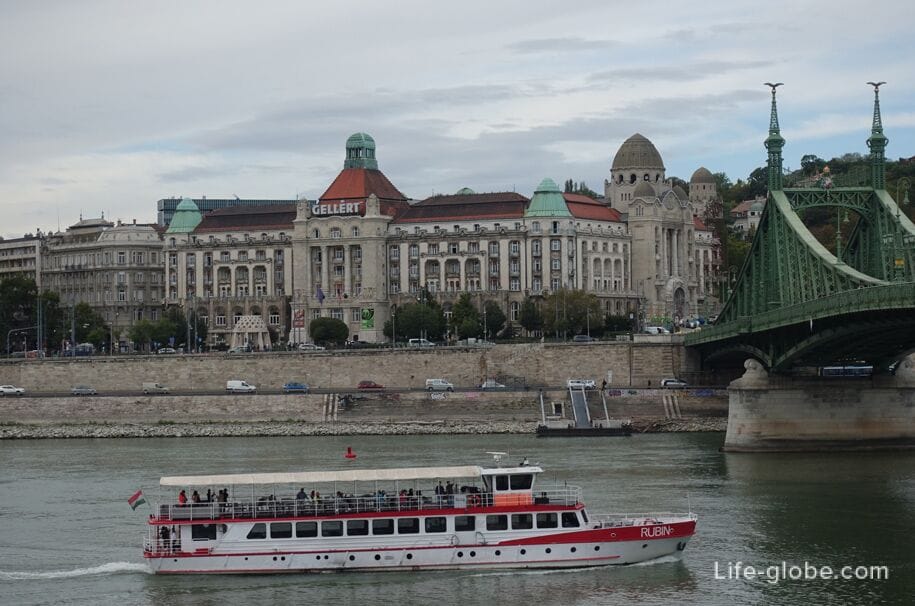
Tour bus-amphibian
Tour bus is amphibious, also known as a floating bus (RiverRide Budapest), takes a walk to the sights of Budapest by road (landmarks on the pest side), and water (the Danube).
The amphibious bus follows a circular route in the centre of Budapest. Part of the tour is on land and the other half on the water (the bus goes down and follows the route along the Danube).
The travel time is about 1 hour 45 minutes. The bus departs from the square of istván széchenyi. Audioguide in many languages, including Russian.
This tour bus is very popular among visitors, especially in summer. Tickets can be purchased on the website.

Tour buses
Budapest Shuttle tour buses with an open platform on the second floor.
There are two companies, each of which has several tour routes around the main attractions of Budapest, including the evening (night) route. There are 24, 48 and 72-hour tickets, including tour buses, tour on the Danube.
Tour buses "Budapest Hop On Hop Off Map". The routes and cost of tickets are available to see and purchase one here or here.
Tour bus "Hop-On Hop-Off Budapest". The routes and cost of tickets are available to see and purchase one here or here.

Ruin bars in Budapest
Since the beginning of 2000-ies in the culture of Budapest is an important part of ruins bars (ruin pubs), iconic attractions of the city.
Ruins bars represent bars that are located in old and dilapidated buildings of the Central city (mainly in the Jewish quarter), received a new interpretation, while retaining the original "naked" walls, window openings without glass and entrance openings without doors.
The interiors of the ruin bars eclectic, here there are: graffiti, vintage stuff, street art and music.
On the ruins bars culture "the ruins of Budapest" is not stopped today, in addition to the ruin bars, there are also other subjects of the ruins of the establishments of gardens-bars, located outdoors; street foods places, where there is an abundance of tents with snacks and meals; the ruins restaurants; ruins, cafes and disco-bars (the ruins of the clubs) where you can dance.
One of the most visited ruins and the true bar is Szimpla pub (Szimpla Kert). Read more about ruin bars of Budapest...
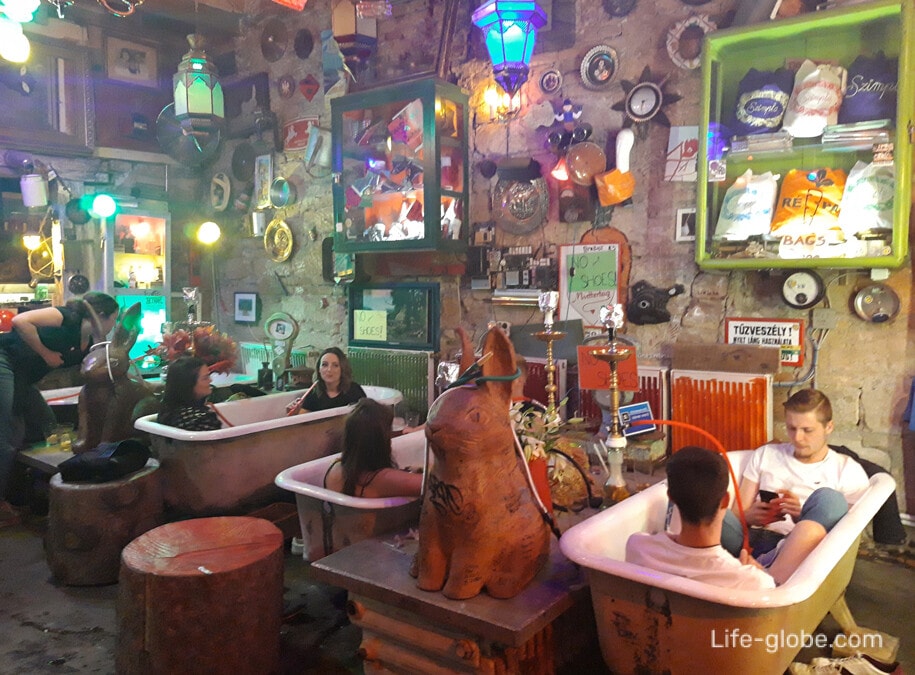
The Central market in Budapest
Central market, also known as the Great market hall (Központi Vasarcsarnok) - the largest indoor market of Budapest.
The market was built in 1896 and opened in 1897.
The inner part of the Central market of Budapest is a large shopping hall on the ground floor.
On the second floor sell non-food items, and located area of public catering, and attracts many visitors. Read more about the Central market...

Public transport in Budapest
Public urban transport Budapest is well developed and is represented by buses, including night, trams, trolley buses and several metro lines (M1, M2, M3 and M4).
Also to urban transport are river buses, cable car, children's railway and the funicular to the Castle hill.
To see the routes of public transport, timetables and the cost per trip is possible here.
The Districts Of Budapest
Currently Budapest consists of 23 districts, which on the maps is defined in Roman numerals: District I, District II, District III, etc.
Of the current 23 districts, 6 are located in Buda (districts 1,2,3, 11,12 and 22), 16 in pest (areas 4 through 10, 13 through 20 and 23 minutes) and 1 in Csepel (21st district).
The most Central and tourist districts, within which are the main attractions of the city are:
- on the side of Buda's districts 1, 2 and 12;
- on the pest side - on the 5th, 6th and 7th districts. District No. 14 is known that within it is a Park Városliget and the Heroes ' square. Areas 8 and 9 attracts tourists with some notable museums such as: the Hungarian national Museum, Museum of applied arts, Holocaust memorial center and the Hungarian Museum of natural Sciences.
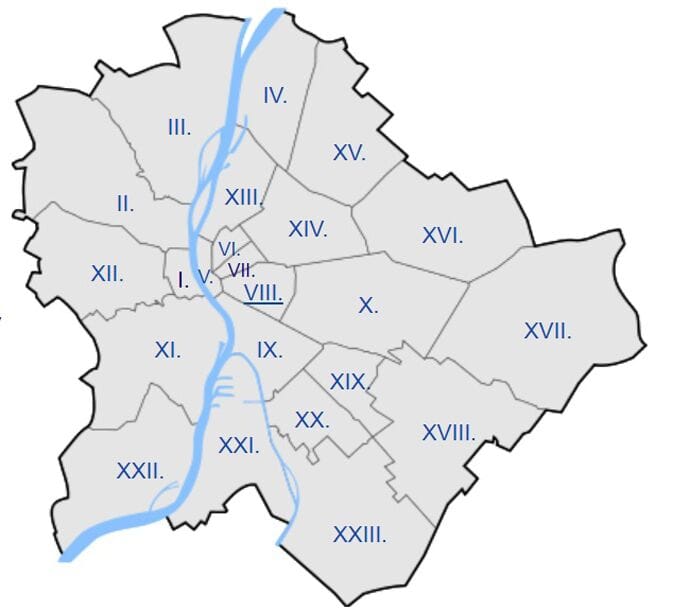
How to get to Budapest
The Budapest international airport Ferenc Liszt (Budapest and plays Repülőter), which connects Budapest and Hungary in General and many cities of Europe, including Russia, Georgia, Ukraine, Israel, UAE, USA, some countries of East Asia, etc. Tickets in Budapest...
From Budapest airport to the city centre can be reached:
- public transport:
- train from Ferihegy station to West railway station;
- bus 200E, which ply round the clock from terminal 2 airport to Piazza Oradea (Nagyvarad ter). If necessary, next to the city center can be reached by bus, tram or metro line M3.
- 100E buses plying to the deák Ferenc square (Deak Ferenc ter). The bus 100E need a separate ticket for 900 HUF.
taxi. Book a taxi/Shuttle service is possible in advance, even from home. At any time of the day, at the airport, you will meet your driver with a sign, which will be written your name and surname. For taxi is enough to tell us your flight details!
car. The most convenient way of independent movement in Hungary is the car. You can rent a car in advance, even from home. The car will be waiting for you upon arrival. Cars for rent, you can look and book here...
In Budapest, and from Budapest from many European cities can be reached by buses, including the company FlixBus. View all destinations of the buses and buy your ticket here....
In Budapest there are three railway stations: Nyugati (West / Budapest-Nyugati), Keleti (East / Wien-Keleti) and Delhi (South / Budapest-Deli) who daily take the train from the major cities in Europe and Hungary itself.
Where to stay in Budapest
The choice of accommodation in Budapest is very diverse, ranging from budget guest houses, hostels and apartments, luxurious 5 star hotels located in the historic city center and near the quays, and more remotely from those.
All accommodation in Budapest you can view and book here
The Currency In Budapest (Hungary)
Monetary unit and therefore, the official currency of Hungary is the Forint (Hungarian - forint), abbreviated on labels in the country - HUF (Hungarian Forint-English / "Hungarian Forint").
In the country in the course as coins (5, 10, 20, 50, 100 and 200), and paper banknotes of 500, 1000, 2000, 5000, 10000 and 20000 forints.
In addition to the HUF, in the majority of outlets and establishments tourist centre of Budapest accept payment with a credit card and euros (rare dollars).
Currency exchange in Budapest in exchange, those in the city a lot. Acceptable for exchange Euro, dollars, British pounds, Chinese yuan, Polish zloty, Croatian Kuna, etc. learn More about currency exchange in Budapest...
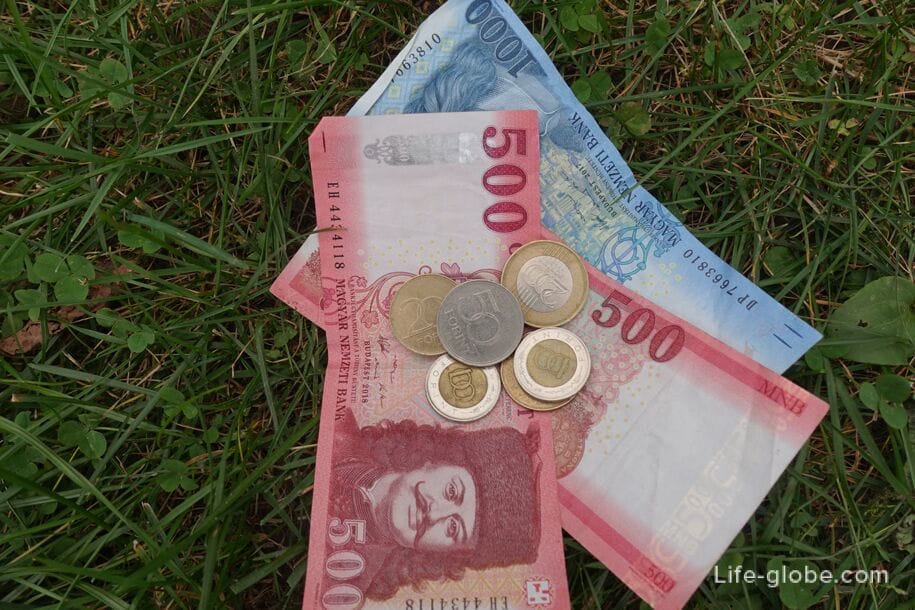
Remark. The presence of large number of various baths in addition to a huge amount of interesting sights in + Buda castle, which undoubtedly deserves special attention; the opportunity to combine relaxation on the plains of the pest side, with walks in the hilly area of Buda side, as well as the low prices in comparison with most other countries of Europe, make Budapest and Hungary in General, without a doubt, one of the best tourist destinations for active-cognitive and relaxation recreation for people of all ages.




